What life was like in Soviet Ukraine (PHOTOS)
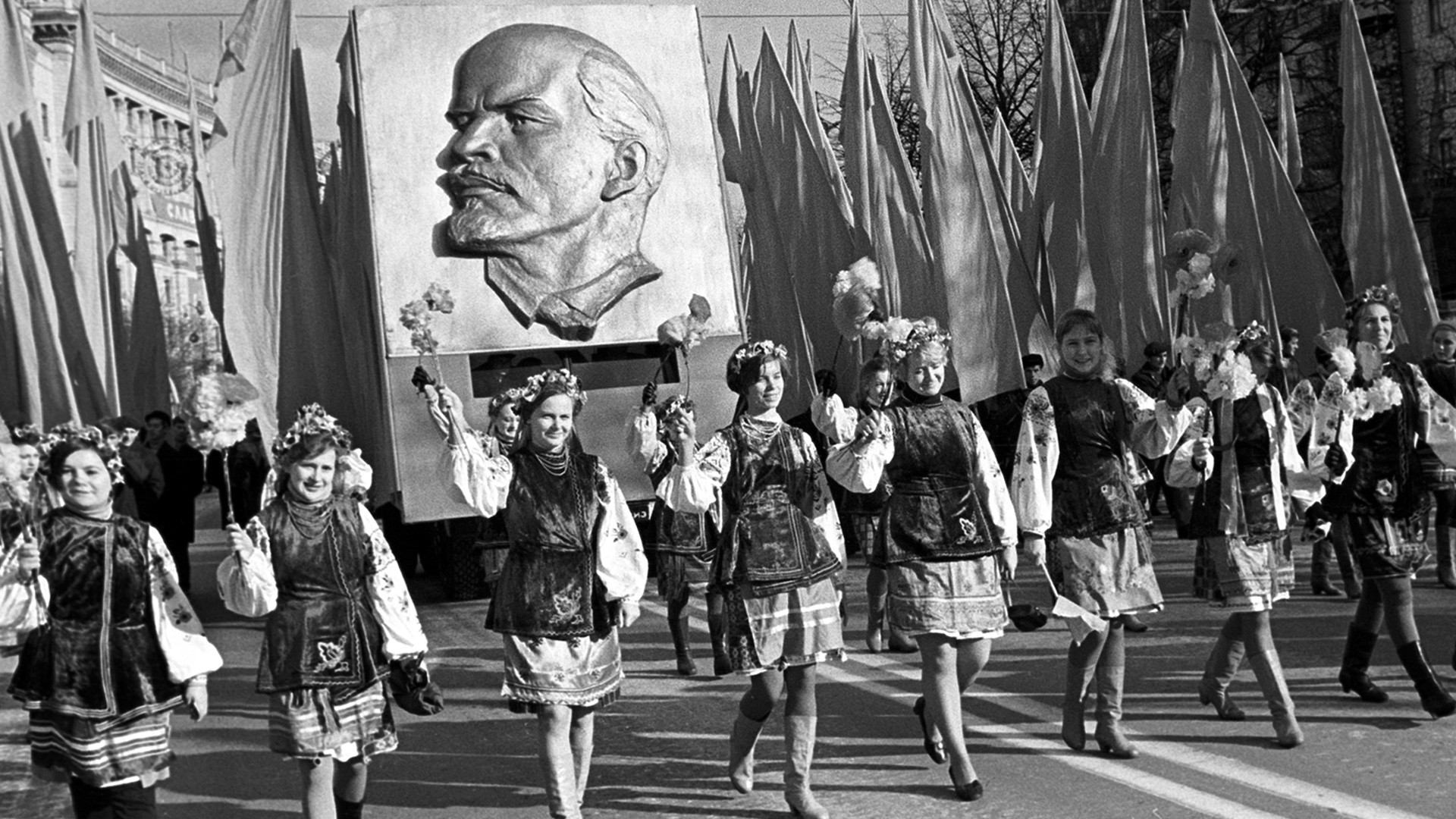
Celebrations of the Revolution anniversary in Kiev, 1970
N.Selyuchenko/SputnikThis is one of the famous Stalinist skyscrapers in Moscow. True, the hotel was completed only after the death of Stalin, and its name was personally chosen by new Secretary General Nikita Khrushchev — Ukraina. The reason was simple: Khrushchev had spent almost his whole life in Ukraine, and had served there first as Chairman of the Council of Ministers and then as First Secretary of the Central Committee of the Communist Party. He was a keen supporter of friendly ties between the “fraternal peoples” of Russia and Ukraine. In addition, one of his first decisions as Secretary General was to present Crimea to Ukraine in 1954 (which back then made little de facto difference).
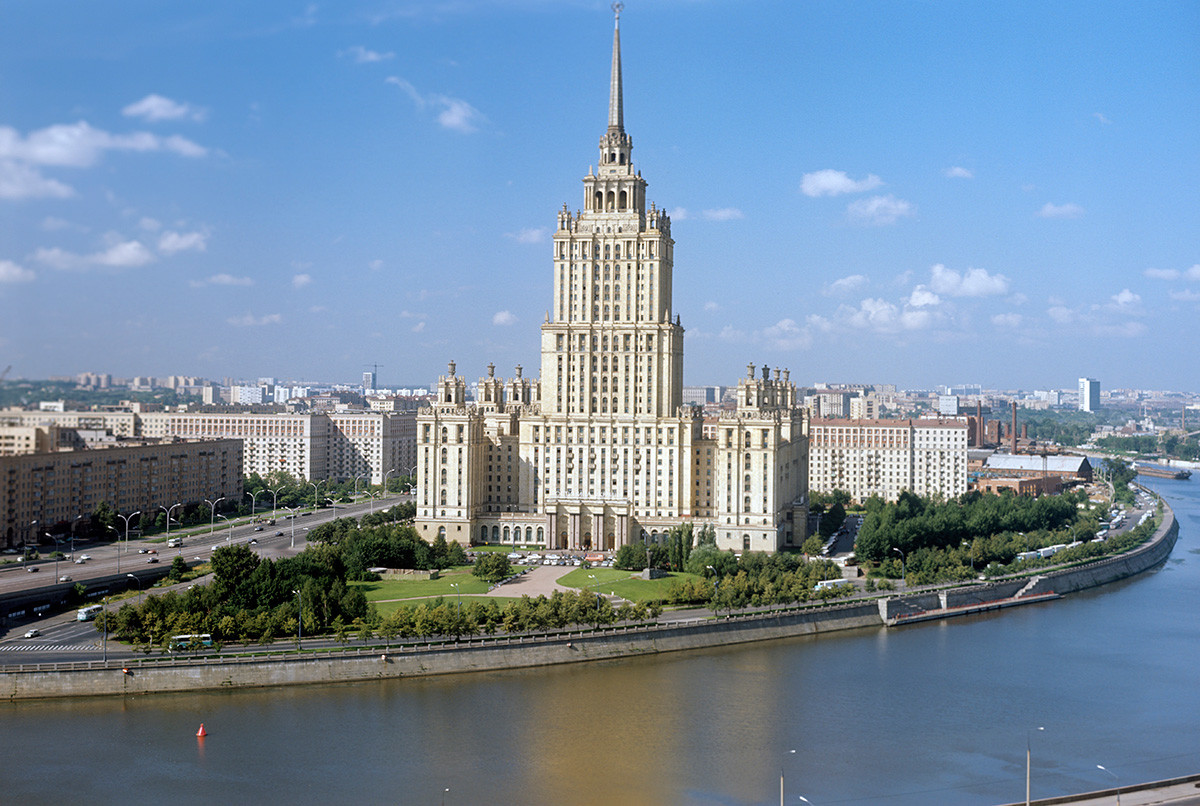
View of Hotel Ukraina.
Ivan Denisenko/SputnikFor many centuries, Russia and Ukraine were united, hence the Russian and Ukrainian peoples are often described as fraternal. In one of the monuments of old Russian literature (The Tale of Bygone Years), Kiev is called “the mother of Russian cities,” and the phrase is still used today.
In 1954, the USSR widely celebrated the “300th anniversary of the reunification of Ukraine and Russia” — referring to an event that took place in 1654, when the hetman of the Zaporizhzhya Cossack army, Bogdan Khmelnitsky, requested to serve Tsar Alexei Mikhailovich Romanov (father of Peter the Great).

Gala concert on the “300th anniversary of Ukraine’s reunification with Russia”, Kiev, 1954
Yevgeny Khaldey/MAMM/MDFFor many years, the region that became part of the Russian Empire was known as Malorossiya (Little Russia). After the 1917 Revolution, Ukraine gained autonomy and joined the USSR as a separate republic, and in 1991 became an independent state.
Architecture and cities
In many Ukrainian cities, you can see all the hallmarks of typical Soviet architecture: Stalinist Empire-style buildings, low-rise khrushchevka apartment blocks, and Lenin monuments (many of which are being demolished as part of the de-Sovietization process).
And yet the country still surprised visitors with its diversity: Crimea was — and still is — home to tsarist summer palaces, where pioneer camps and guest houses were sited. Western Ukraine was a relic of old Europe. Whenever a European setting was needed for a Soviet film, Lvov was top of the list. And Odessa was effectively built by Europeans, a kind of southern St Petersburg.
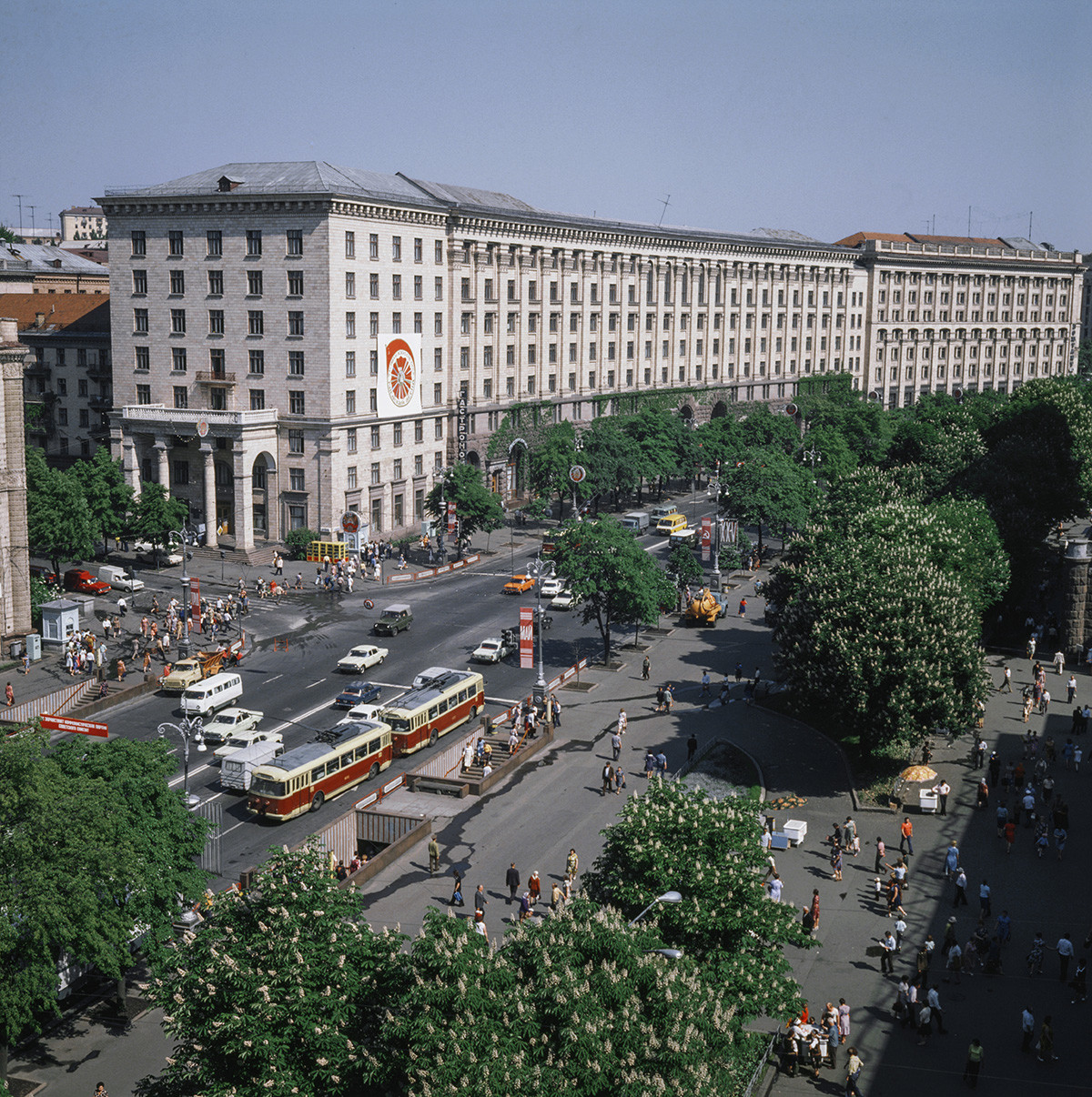
Khreshchatyk, Kiev’s central street, 1979
Vladimir Samokhotsky/TASS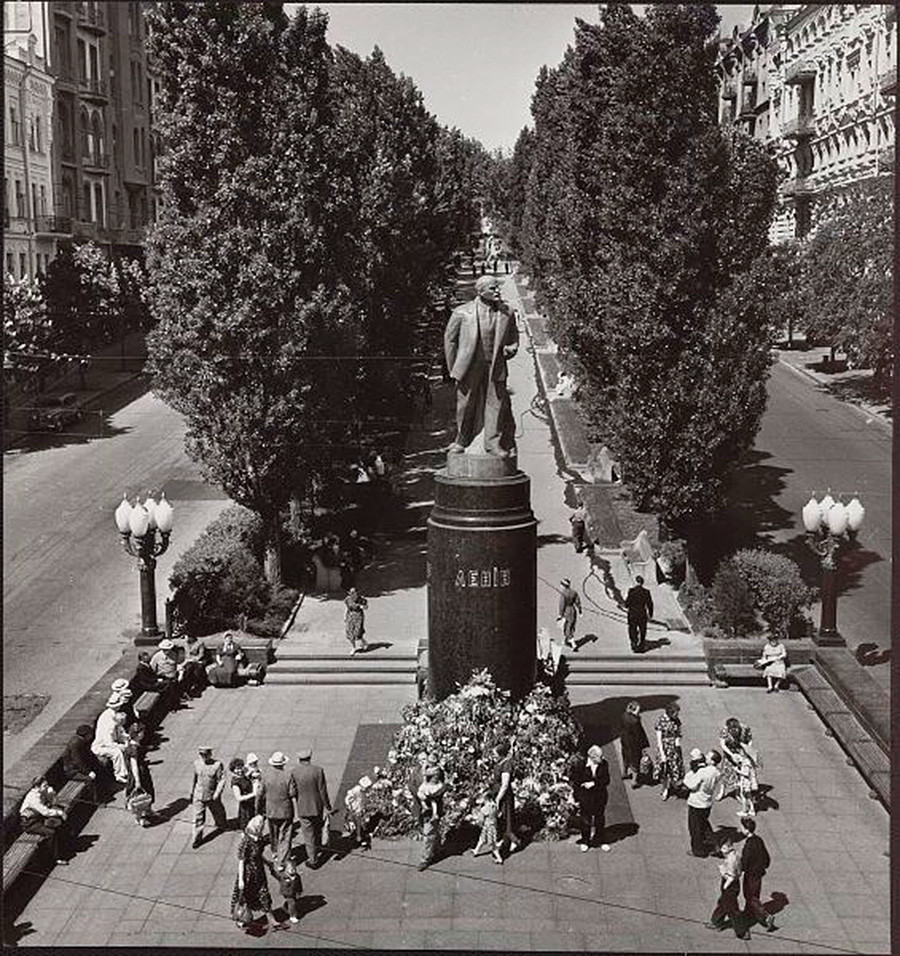
Kiev, Lenin monument, 1950s
Dmitry Baltermants/MAMM/MDF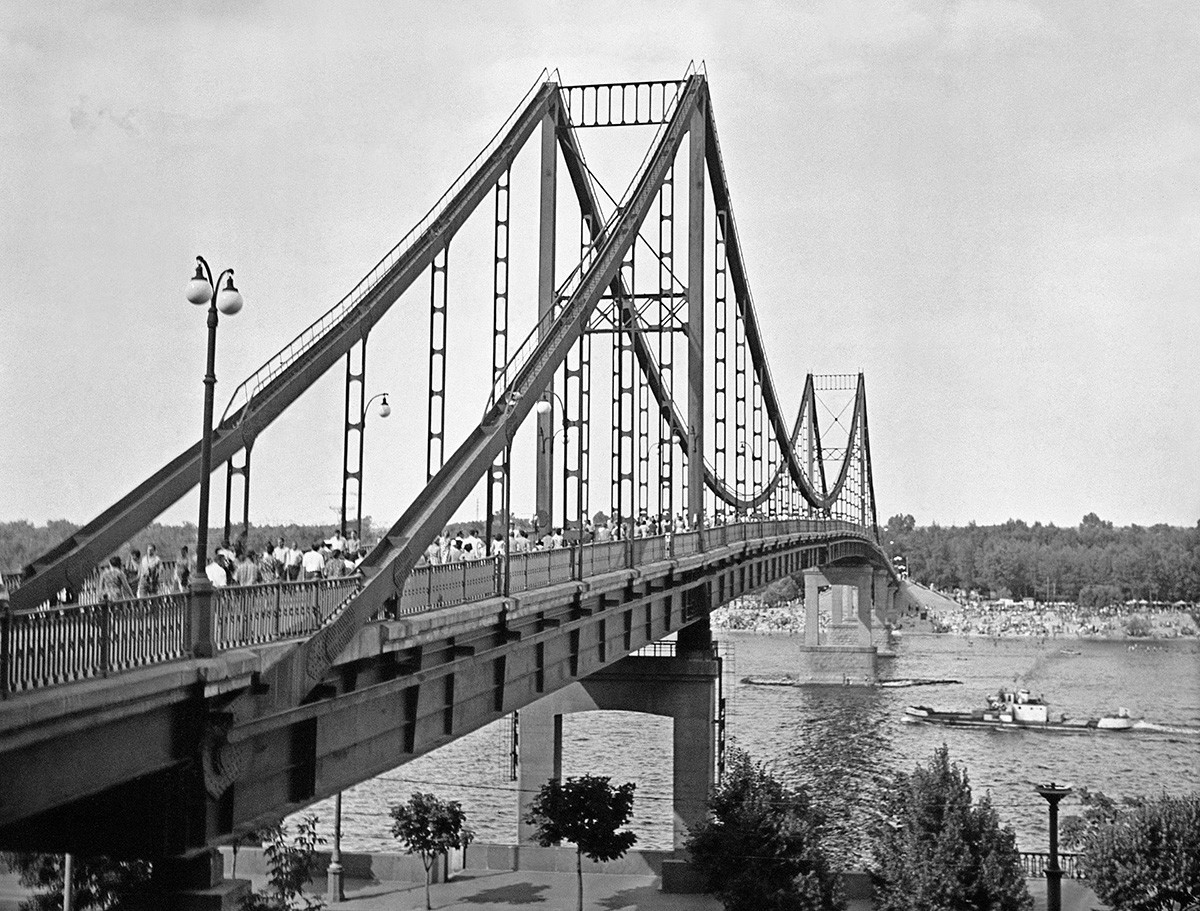
Bridge over the Dnieper River, Kiev, 1965
Valentin Kunov/TASS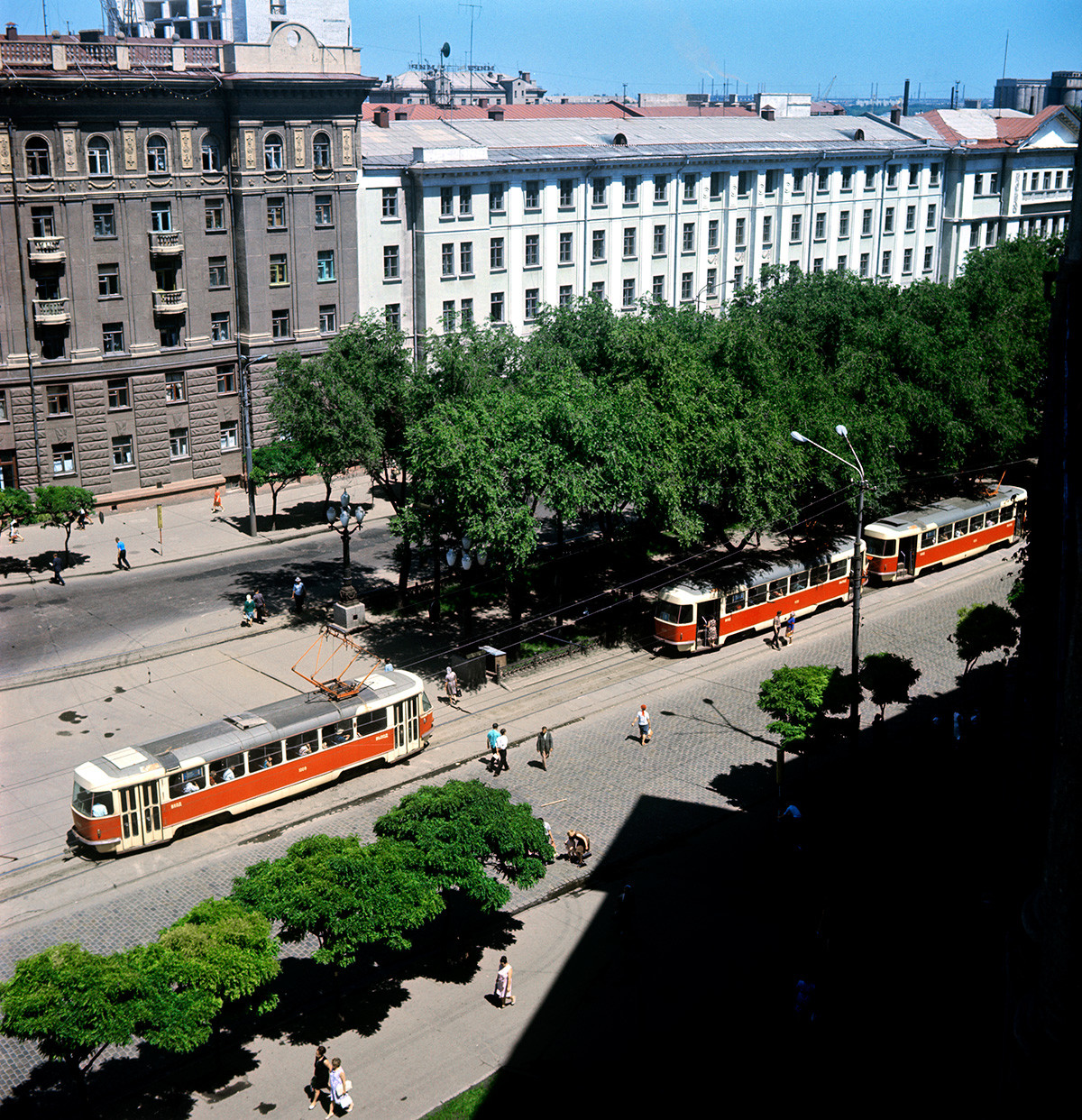
Streets of Dnepropetrovsk, 1970
Vladimir Arsiriy/Sputnik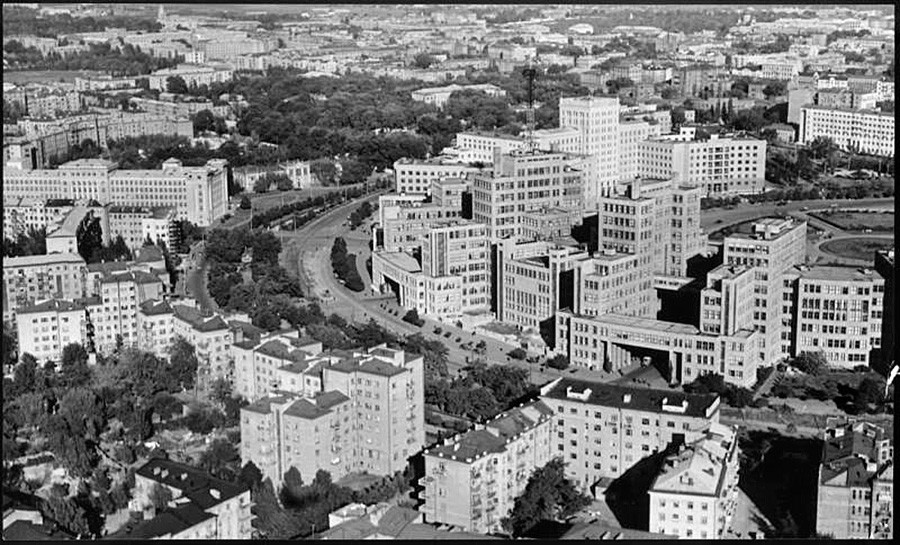
Kharkov, 1957
Vsevolod Tarasevich/MAMM/MDF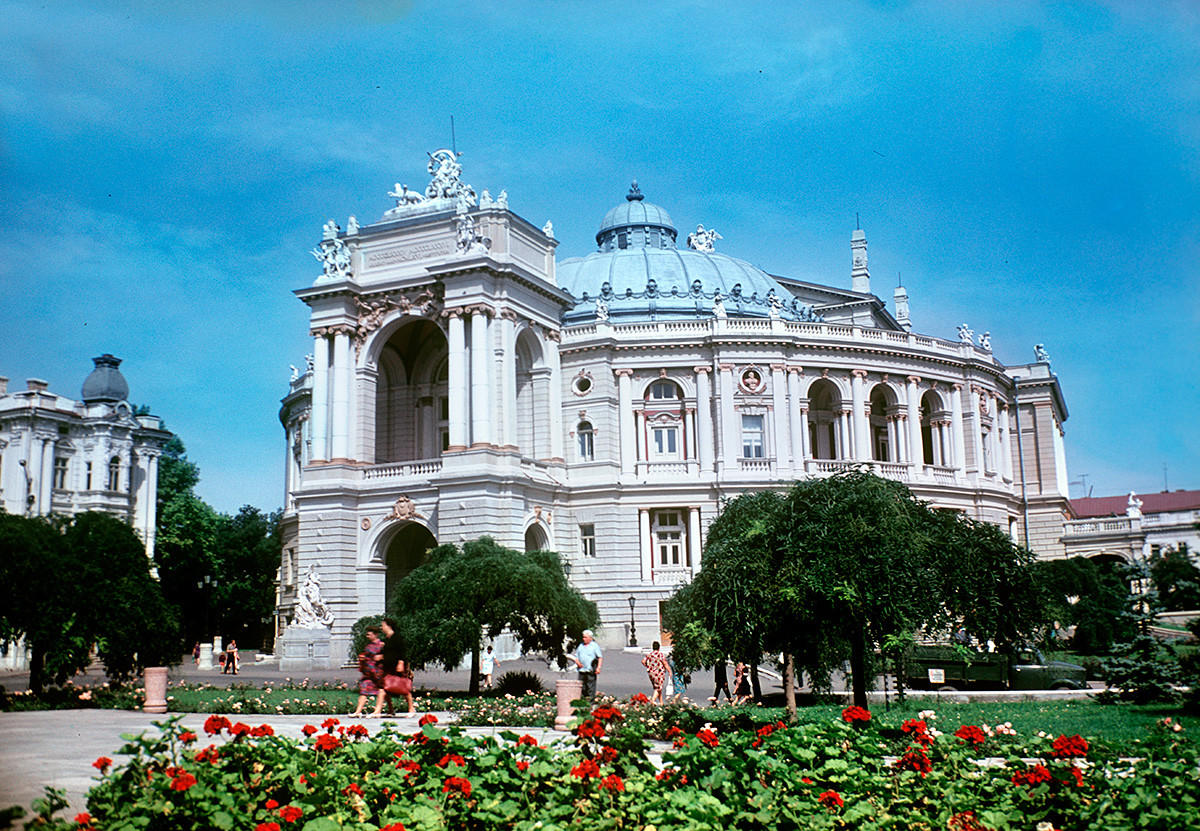
Odessa National Academic Opera and Ballet Theater, 1969
G. Kostenko/Sputnik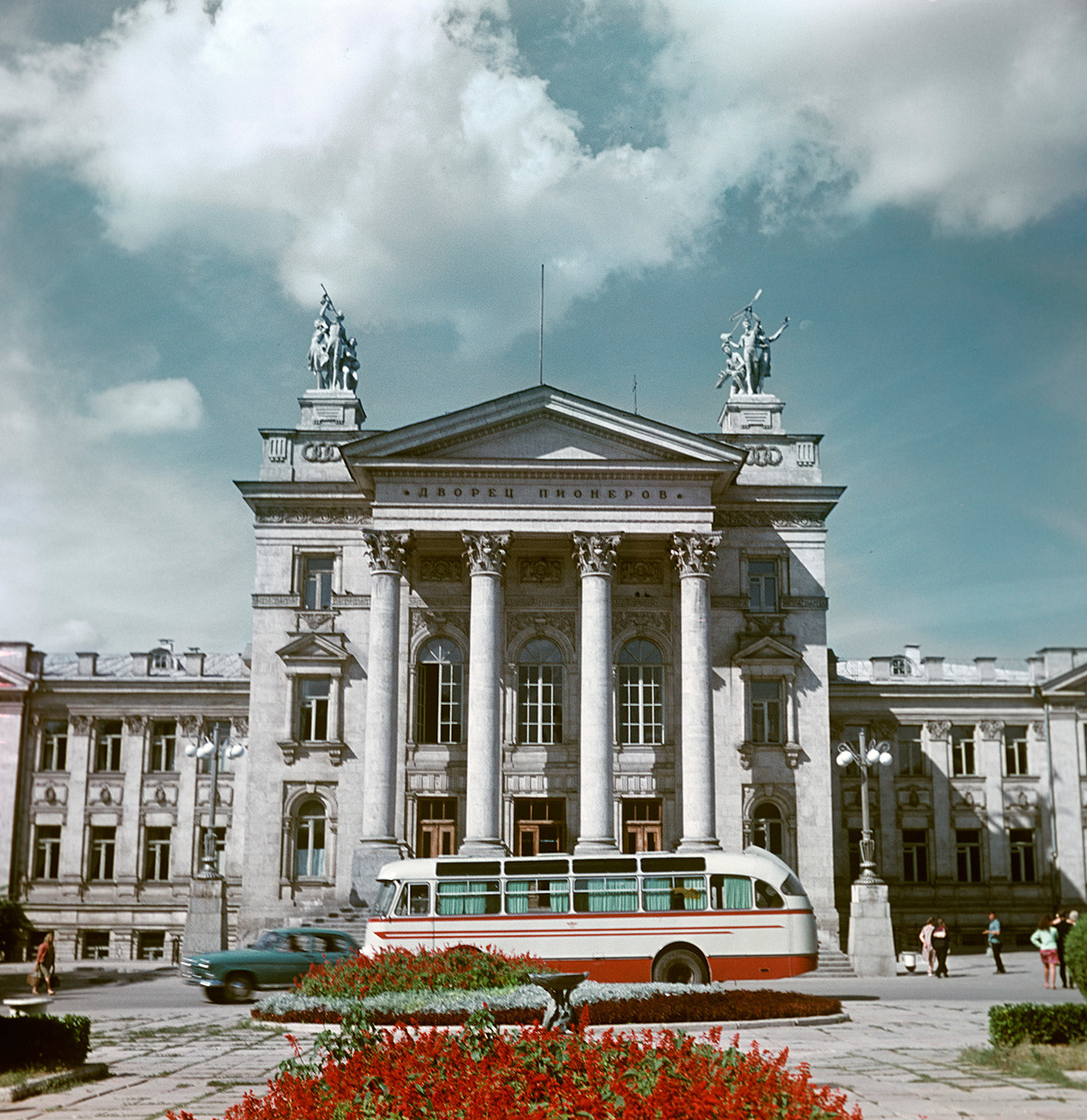
Pioneers Palace, Sevastopol, 1970
G. Kostenko/Sputnik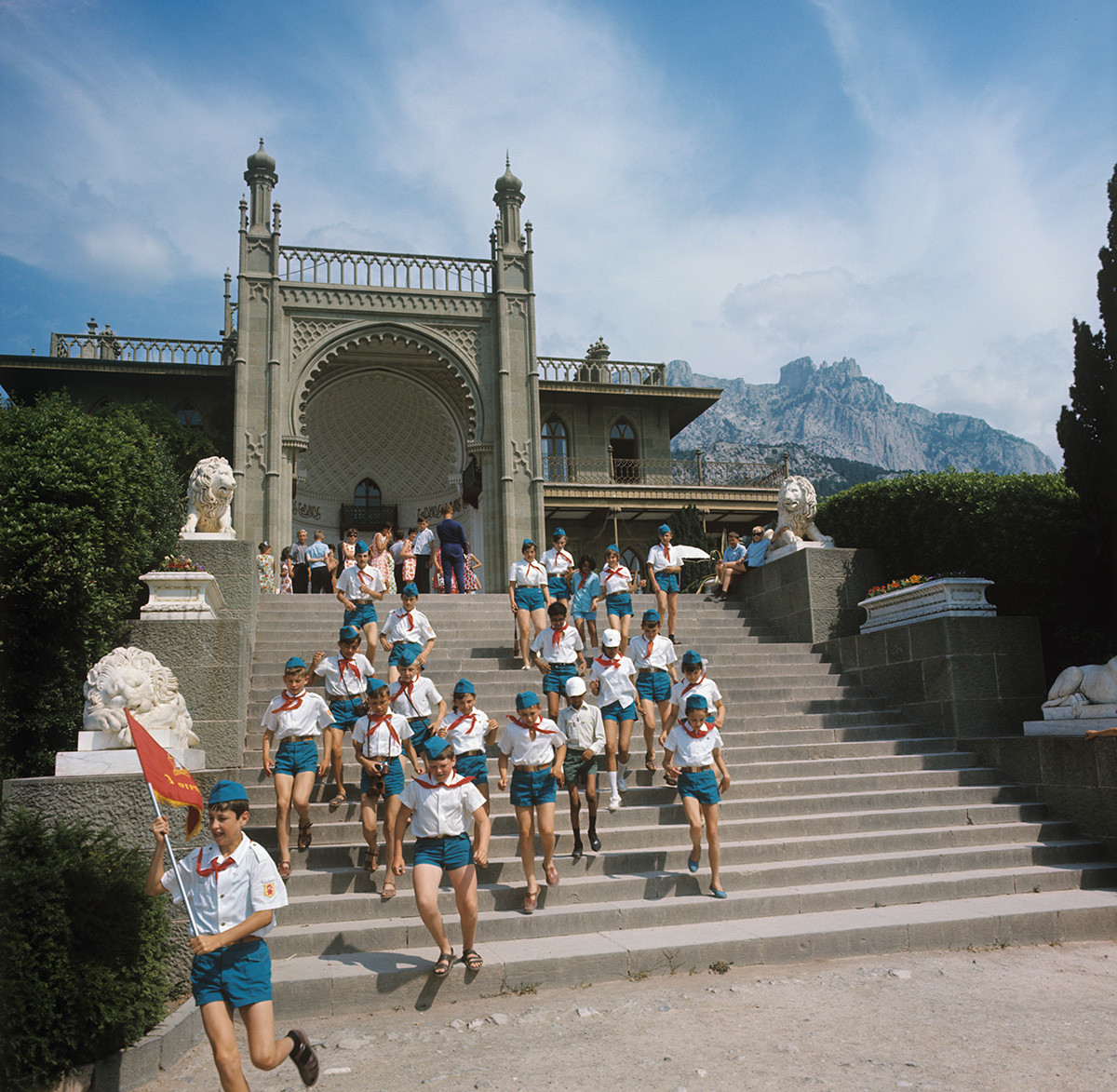
Pioneers on an excursion to Vorontsov Palace, Crimea, 1970
Ettinger/Sputnik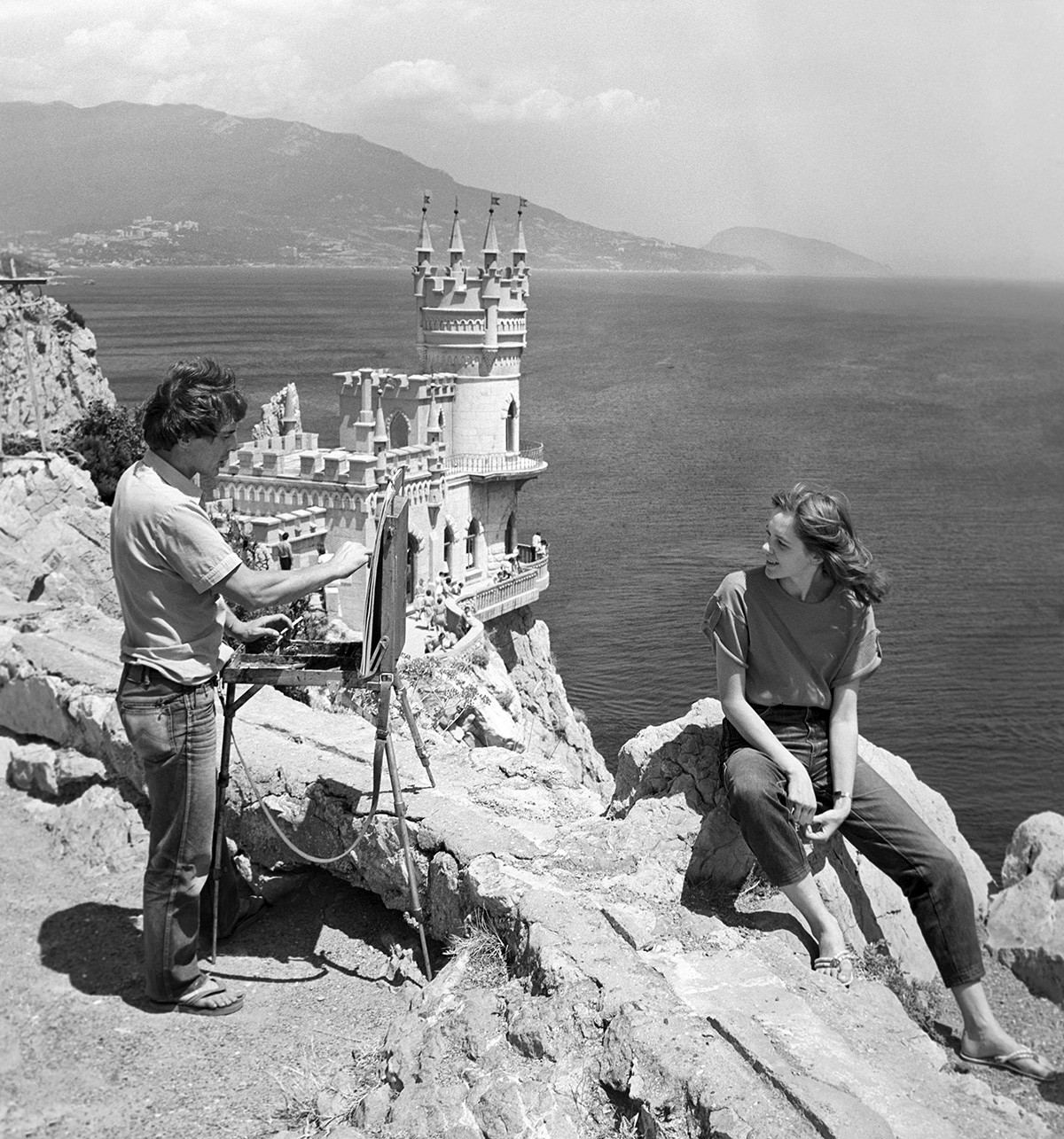
Swallow's Nest palace, Crimea, 1968
Konstantin Dudchenko/TASS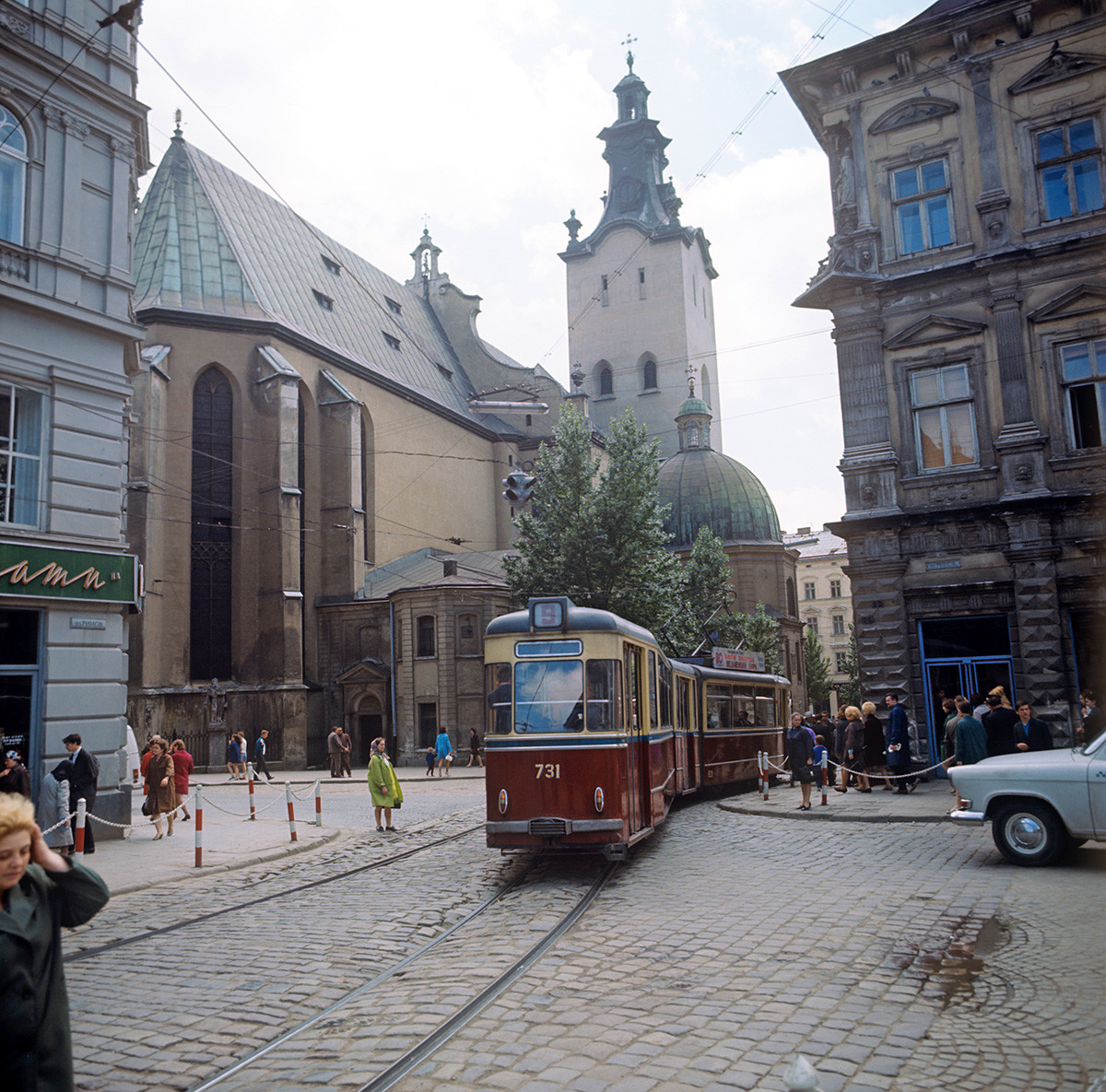
Lvov, 1970
B. Krishtul/SputnikBreadbasket
Ukraine is a “black earth” region with wonderful soil for agriculture. Combined with the mild climate, it is great for growing not only cereals, but all kinds of fruits, grapes, watermelons, etc.
Other Soviet people living in harsh climates looked on with envy, and those with relatives in Ukraine often received parcels of juicy apricots or melons. Ukraine produced flour, bread, dairy products, and fresh fruit and veg for the whole Soviet Union. It also had (and still does) a strong wine-making industry. Sugar production from beetroot was another major part of the agricultural complex.
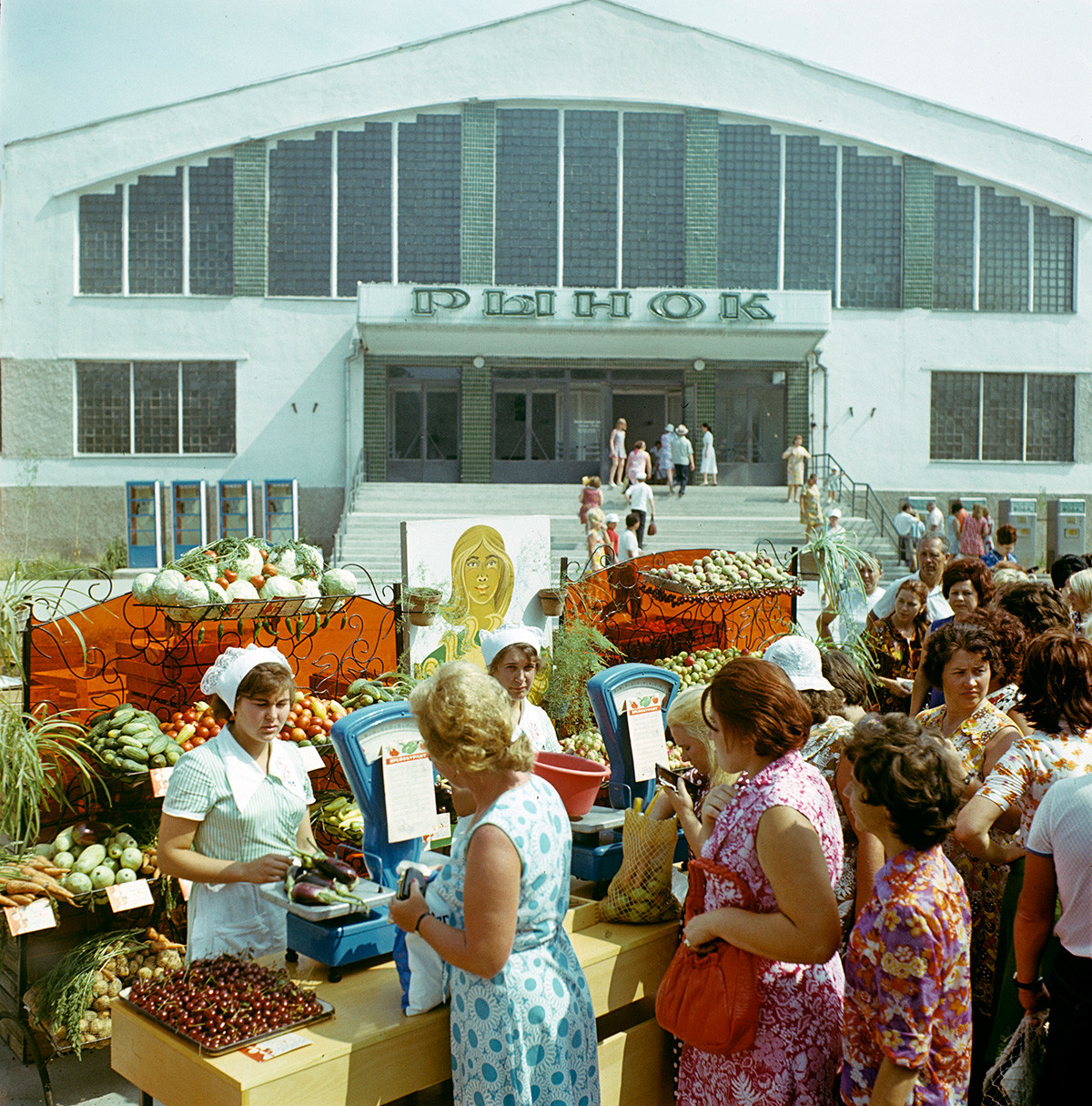
Fruit and veg sellers on a street in Yevpatoriya, Crimea, 1979
Shkolny/Sputnik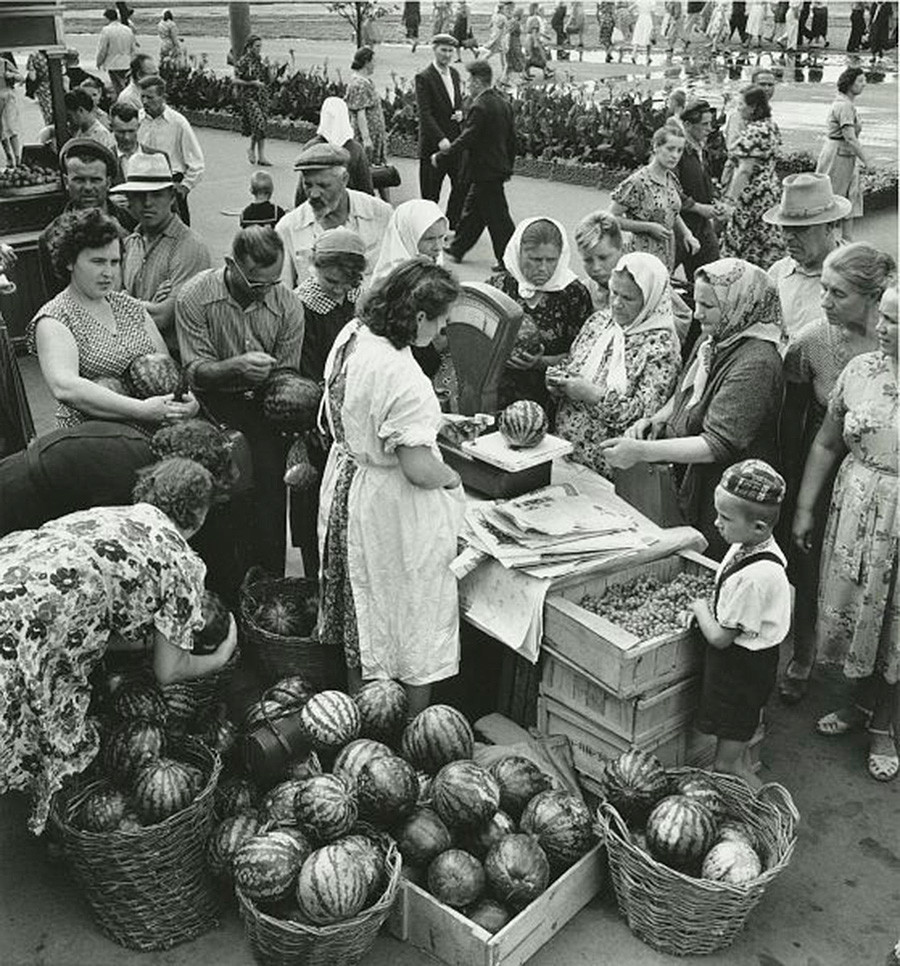
Street trading in Kharkov, 1958–59
Vsevolod Tarasevich/MAMM/MDF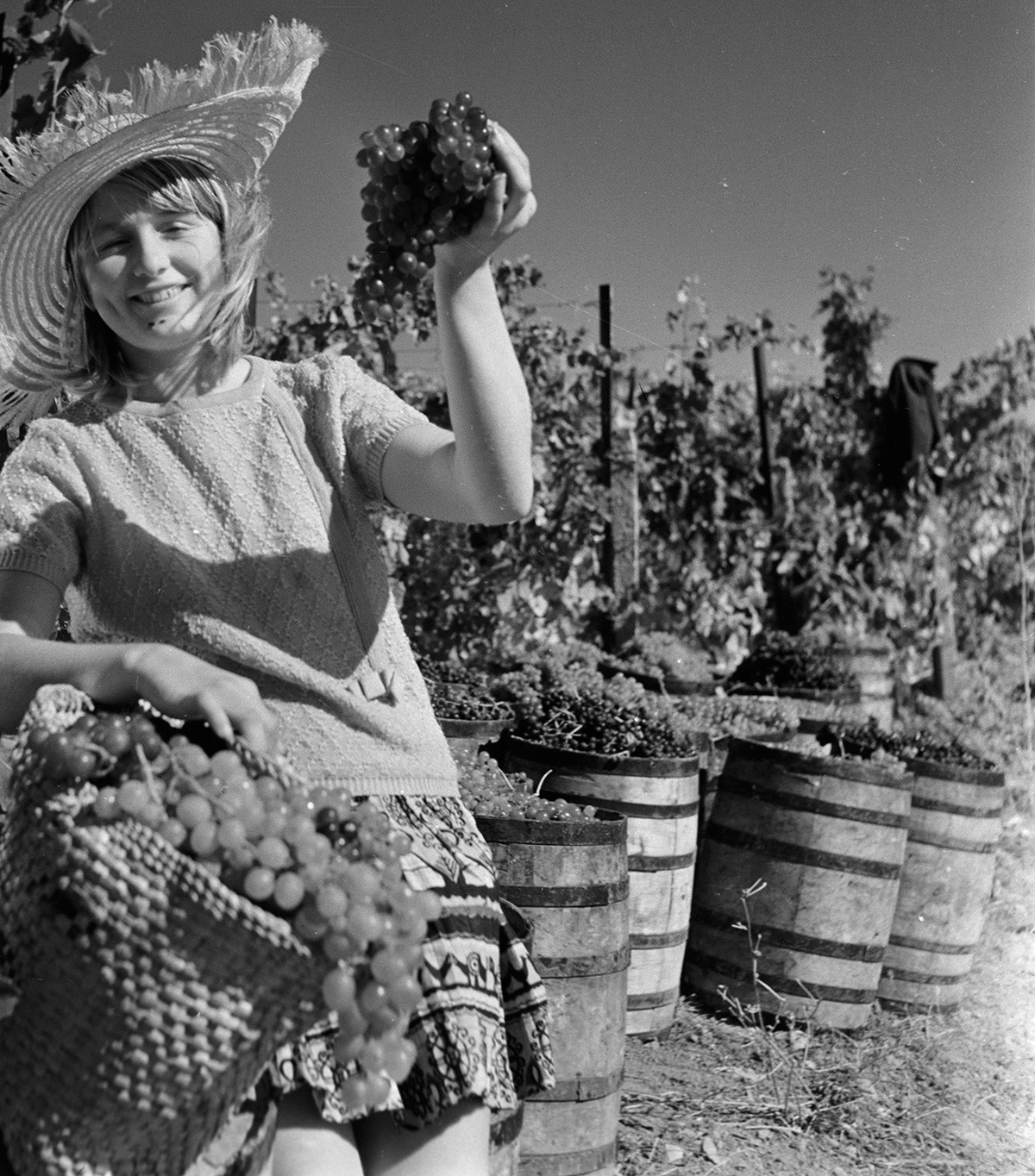
Grape harvest in Crimea, 1970
A. Givental/Sputnik
Collective farm harvest, Cherkasy Region, 1935
Georgy Petrusov/SputnikIn 1932–33, Ukraine suffered a massive famine that claimed 2–7 million lives, according to various estimates. It was due to crop failure and the seizure of food from the peasants by the authorities. This event, known as the Holodomor, is viewed very differently by Russian and Ukrainian historians and politicians. Modern Ukraine considers the actions of the Soviet government a genocide against the Ukrainian people, while Russia points to the fact that similar actions caused starvation elsewhere in the Soviet Union too. Read more about the famine in the USSR here.
Health tourism
Ukraine had everything for a healthy, restful vacation. The Black Sea coast in Crimea, Kherson, and Odessa was teeming with sanatoriums and resorts. Crimea also offered mountain hiking, and in the Carpathian Mountains there was skiing to be had!
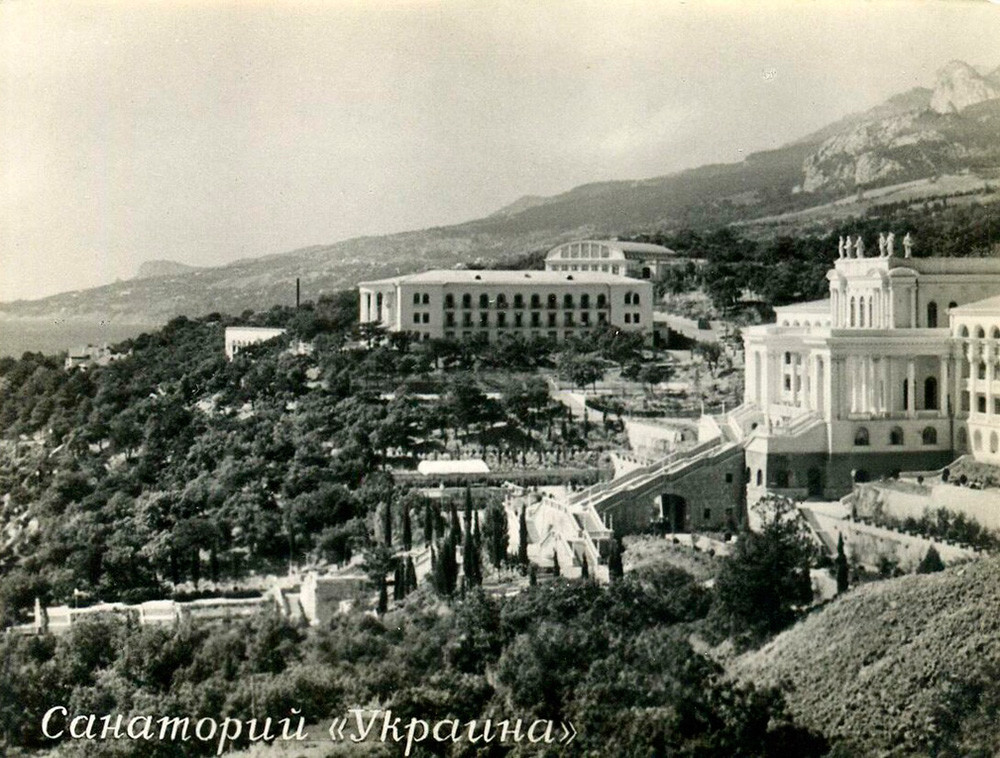
Ukraina sanatorium, Crimea, 1959
Max Alpert/Archive of Alexander Odinokov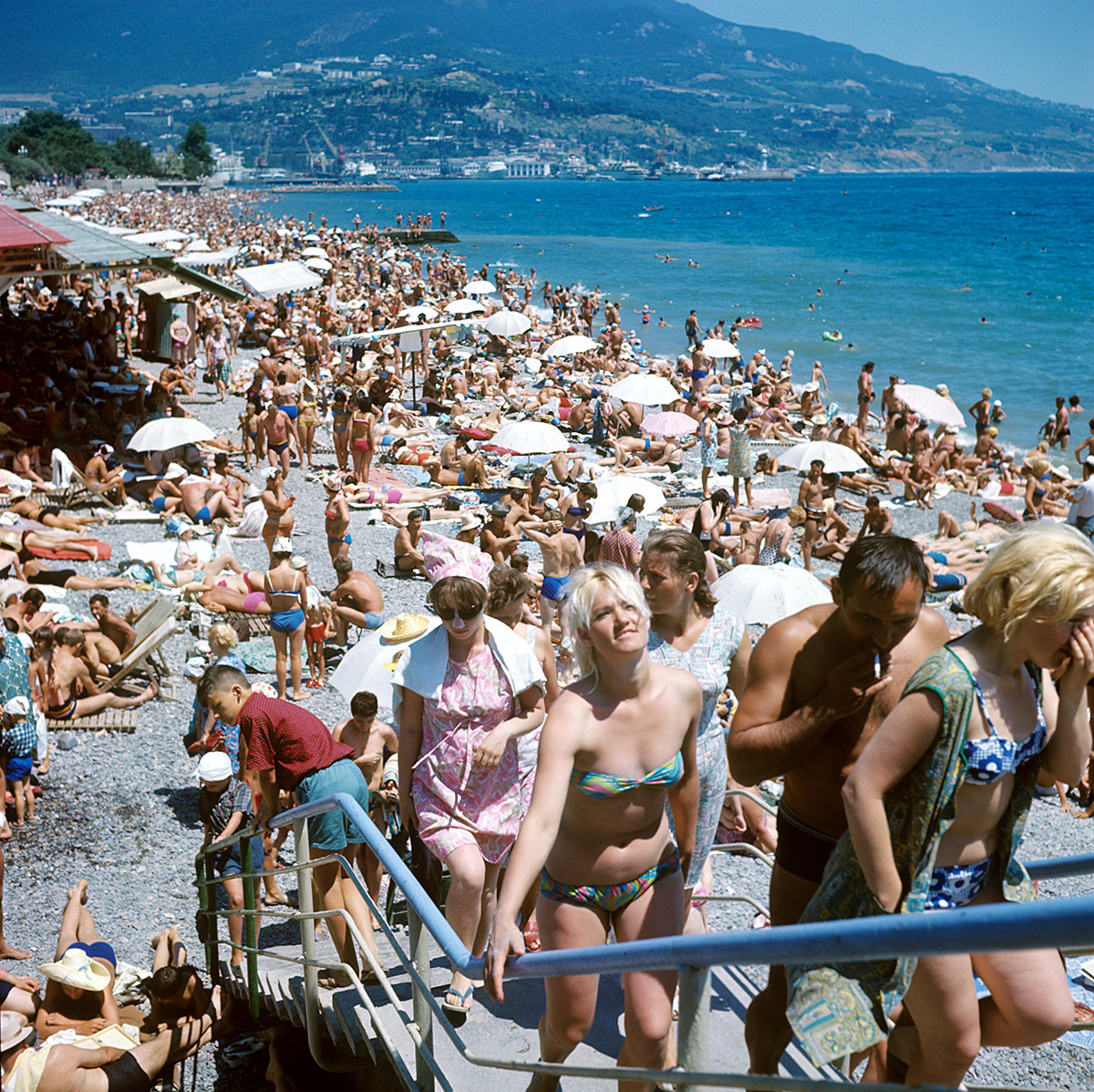
Yalta beach, 1969
Ettinger/Sputnik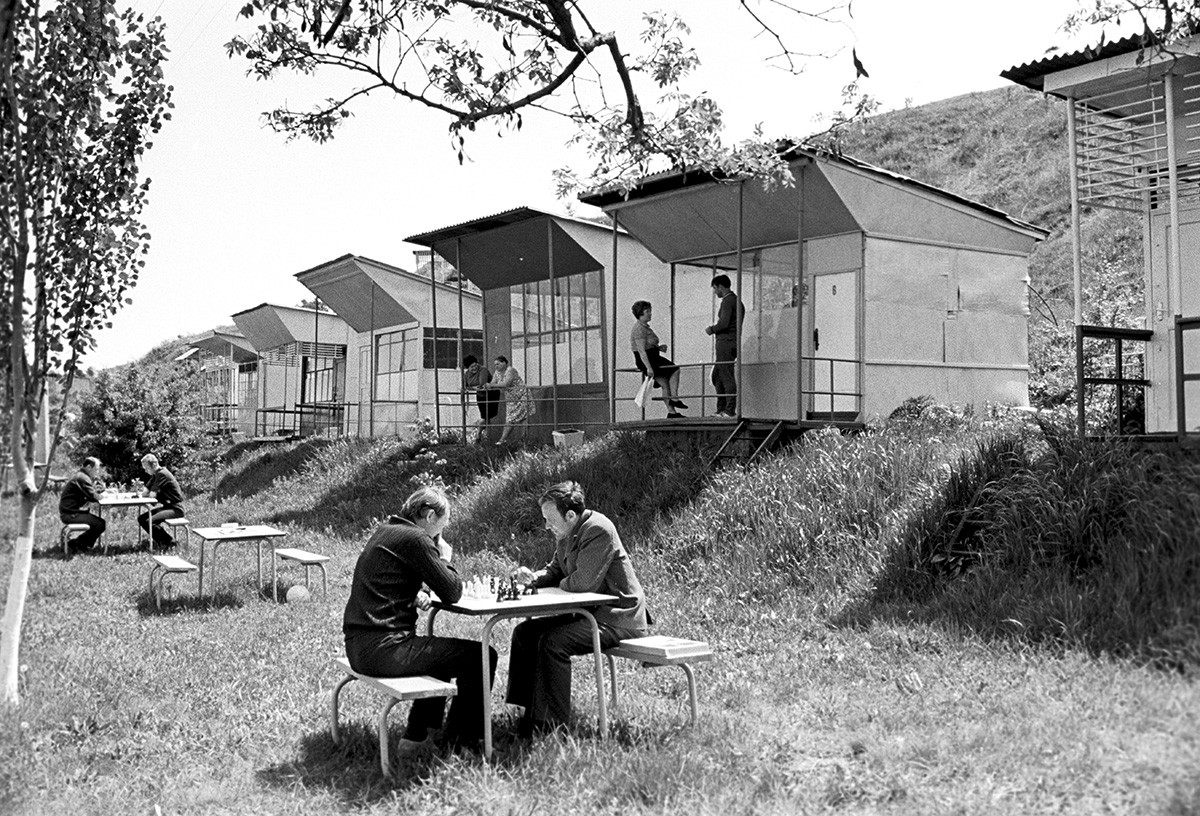
Rodniki recreation center at the Black Sea Shipbuilding Plant on the banks of the Southern Bug River, 1974
Yuri Somov/Sputnik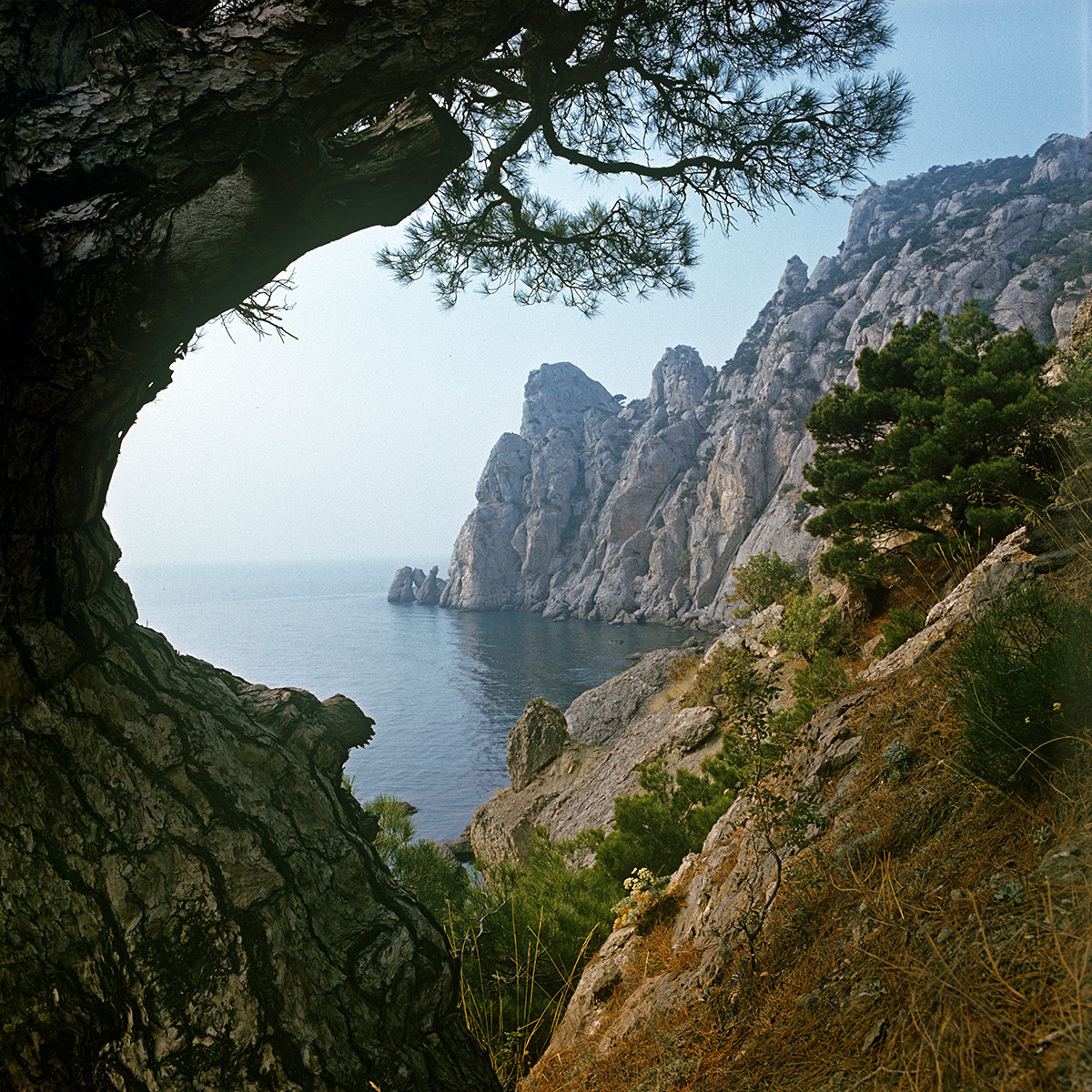
The southern coast of Crimea, 1981
Alexey Bushkin/Sputnik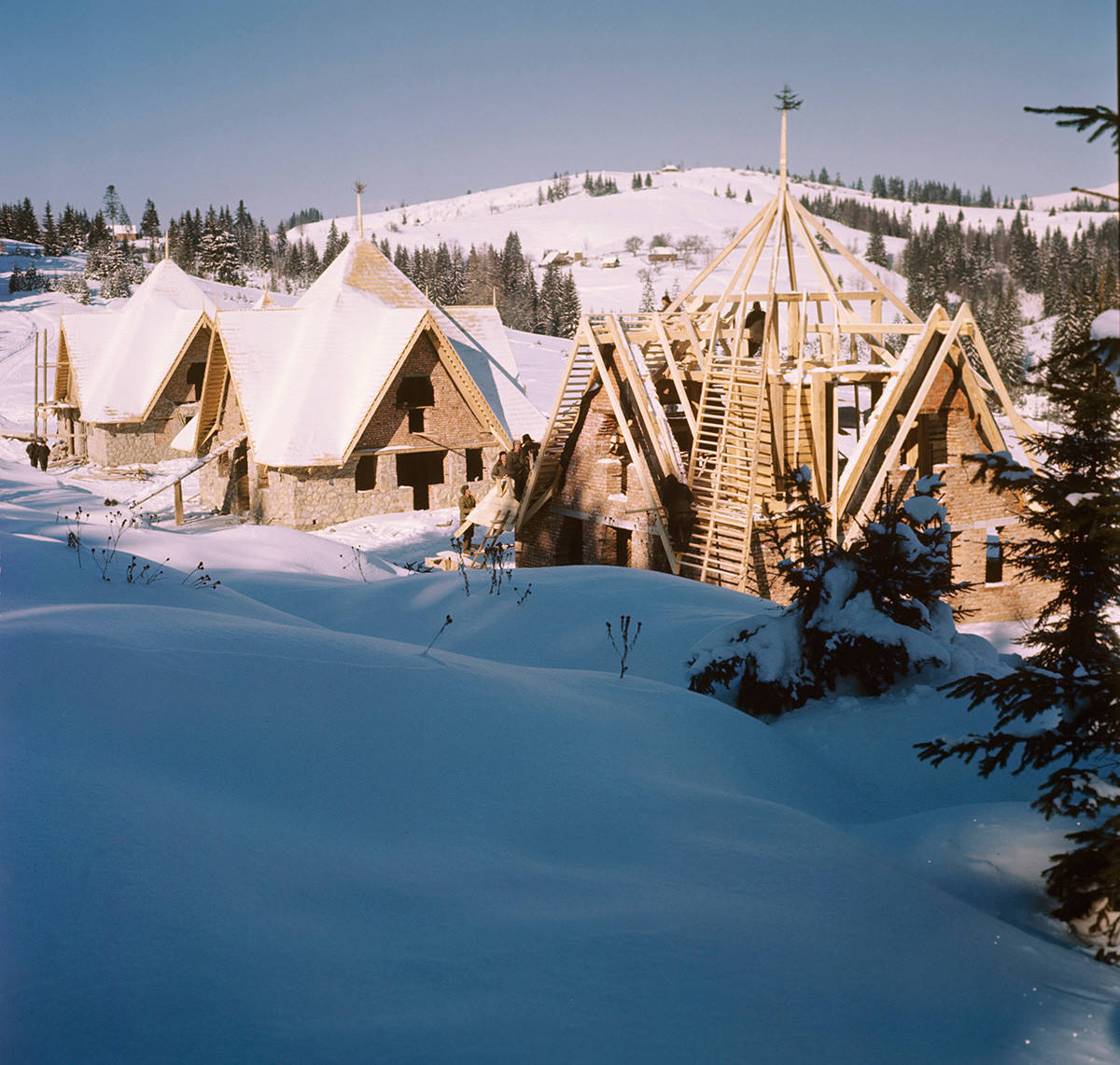
Building cottages for tourists in the Carpathian Mountains, Ivano-Frankivsk Region, 1970
Vladimir Perventsev/SputnikOn the frontline
During WWII, Ukraine was the center of many decisive battles. In 1941–42, German troops occupied almost all of it. Jews were forced to live in ghettos and executed en masse. The notorious Babi Yar is a ravine in Kiev, where more than 100,000 people were shot. In 1943–44, the Soviet army liberated the whole of Ukraine. However, the damage was colossal — countless villages burned to the ground, cities destroyed.
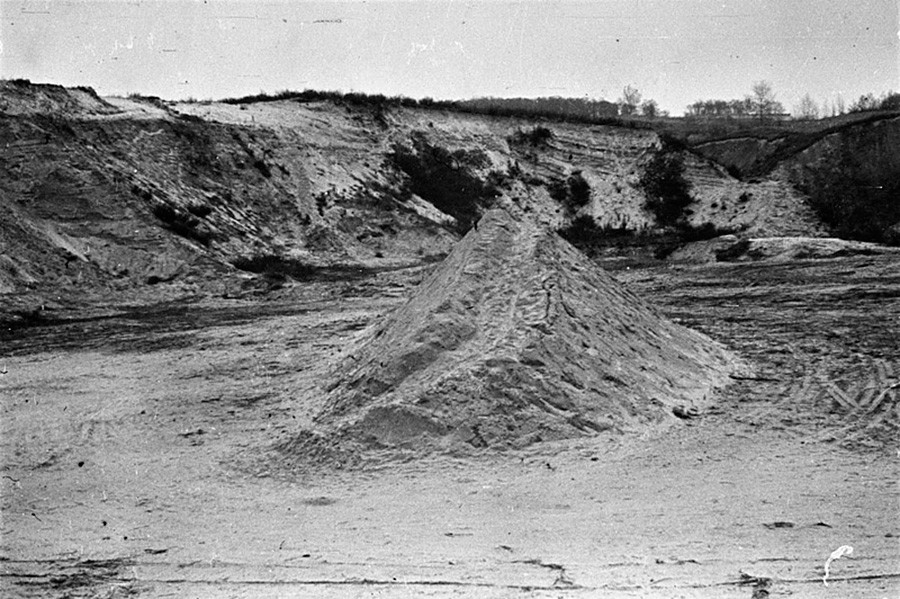
Babi Yar, 1943
Arkady Shaikhet/Private collection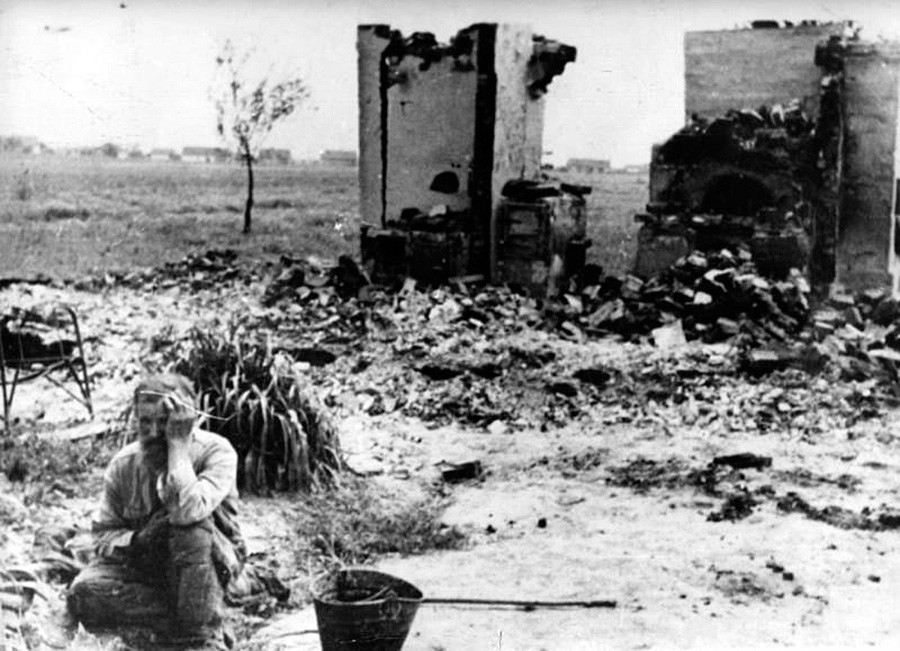
"The enemy burned our native hut." Left-bank Ukraine, 1943
Aron Zamsky/MAMM/MDF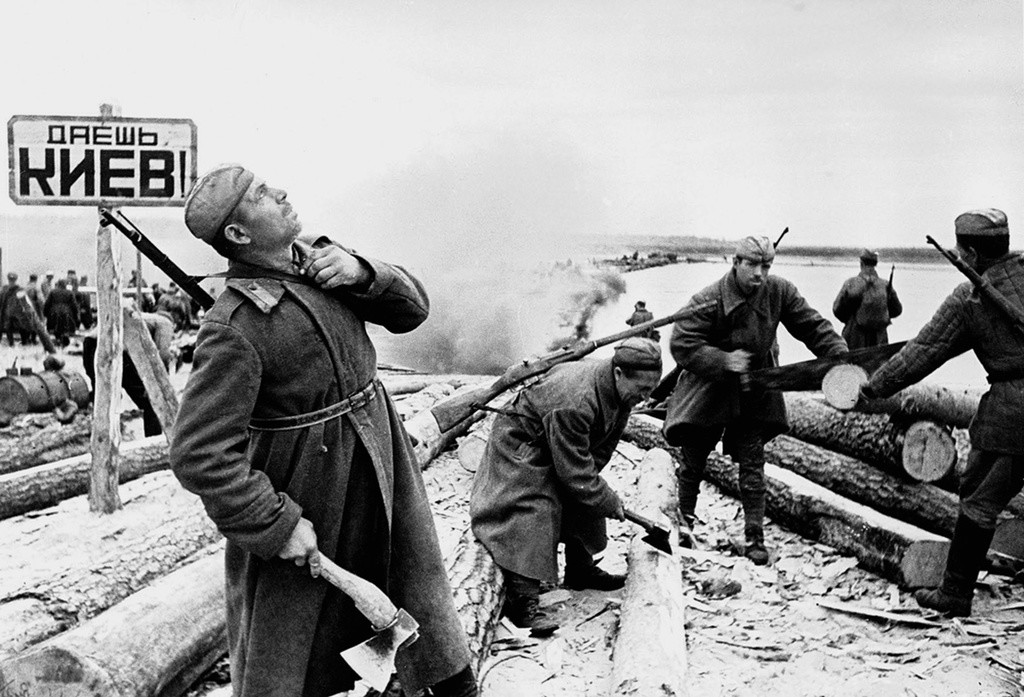
“Hand over Kiev!” Crossing the Dnieper, 1943
Arkady Shaikhet/MAMM/MDF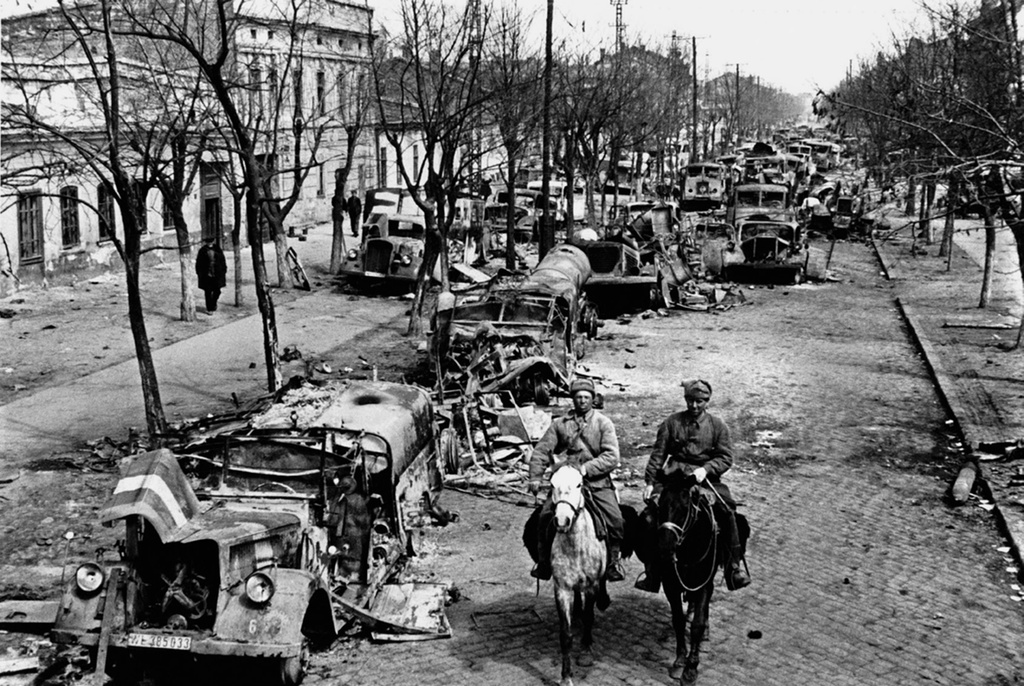
Odessa in the first days after liberation, 1944
Dmitry Baltermants/MAMM/MDFIndustry
Mining, energy, engineering, metallurgy... These are just some of the industries that flourished in Soviet Ukraine. Construction progressed at breakneck speed throughout the republic, and factories and mines operated at full capacity.
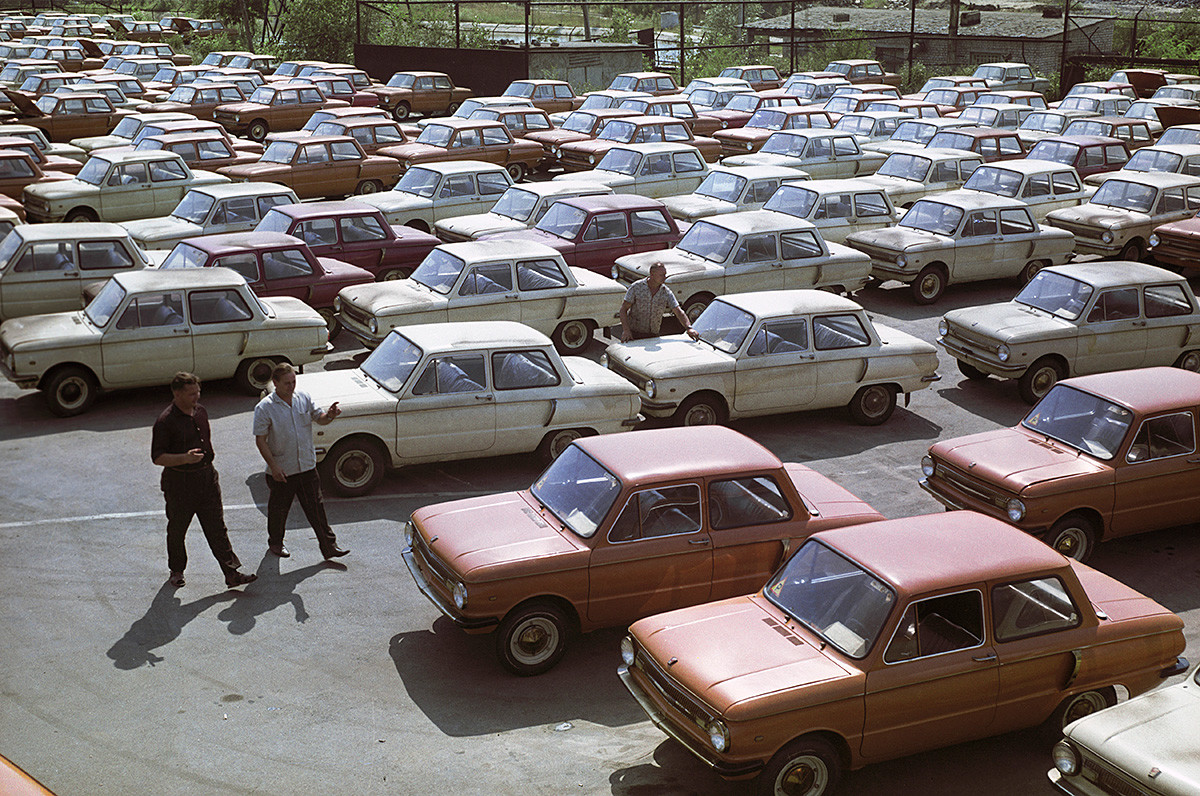
Zaporozhets cars, made by the Zaporozhye Automobile Plant, 1970
Vladimir Akimov/Sputnik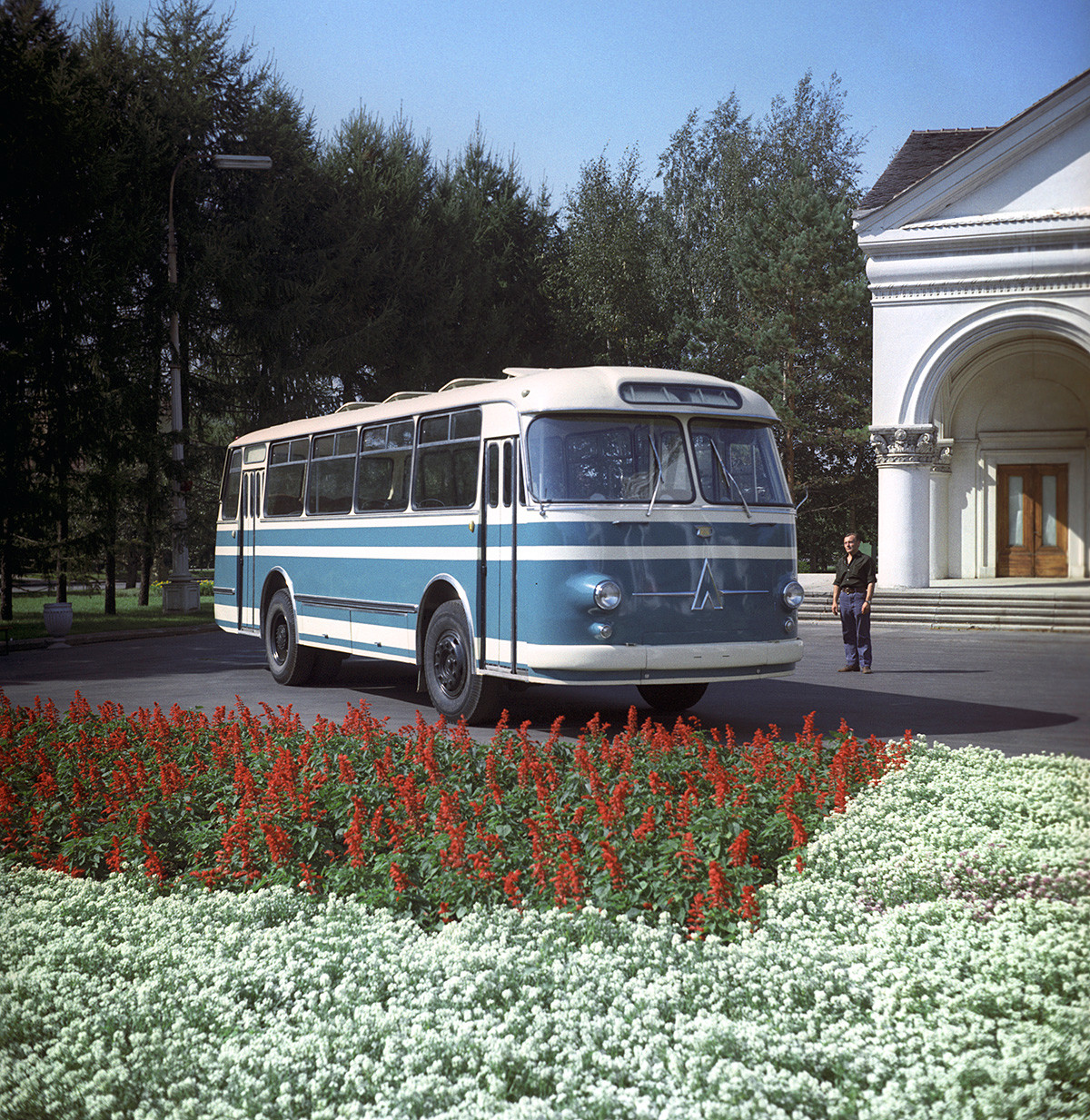
Soviet LAZ-697 bus, manufactured by the Lvov Bus Factory, 1970
Runov/Sputnik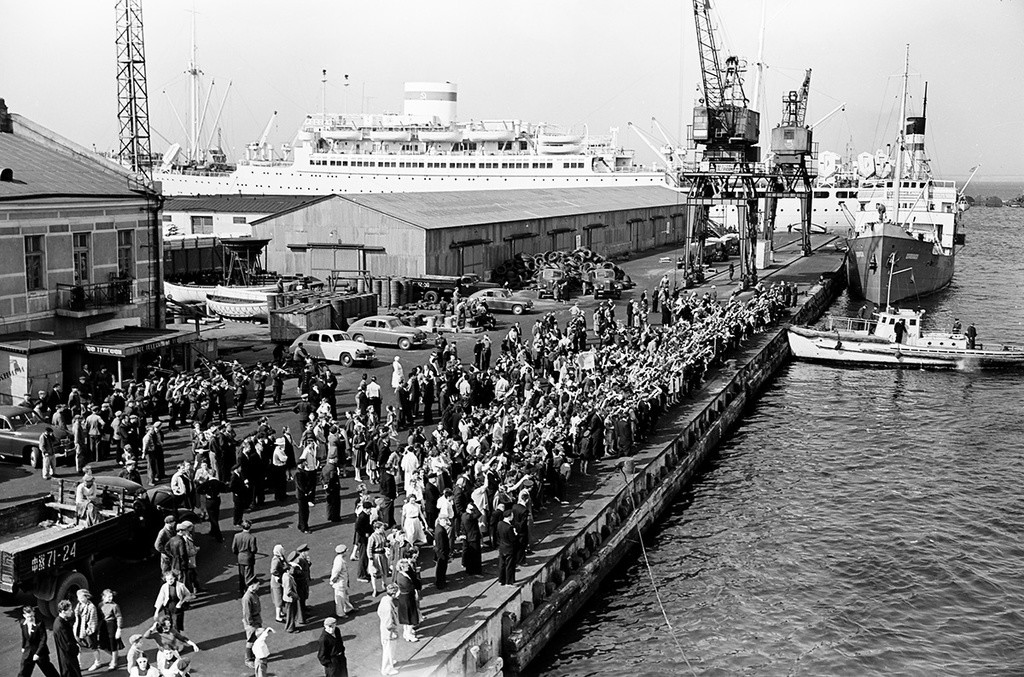
Odessa port, 1958
Valentin Khukhlaev/Archive of Valentin Khukhlaev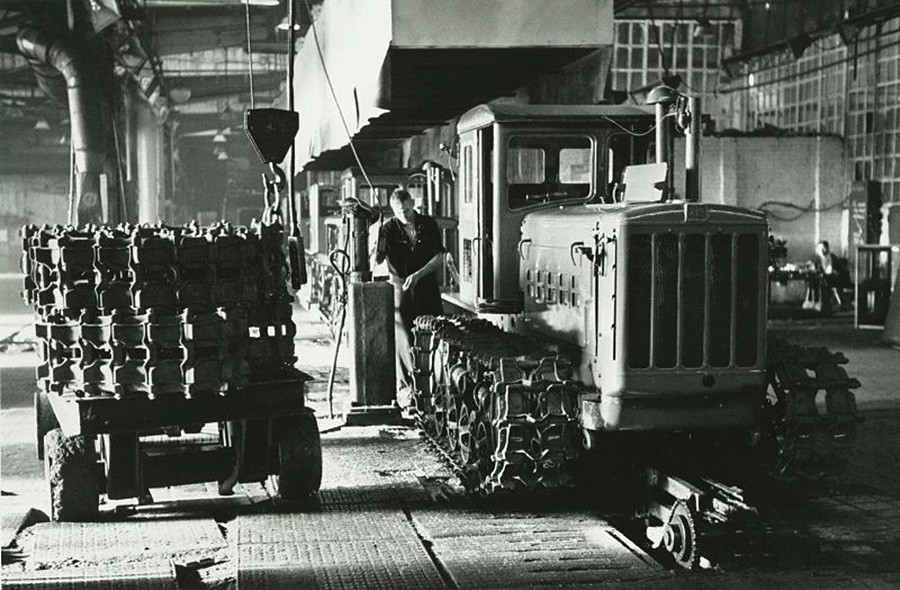
Tractor plant in Kharkov, 1958-59
Vsevolod Tarasevich/MAMM/MDF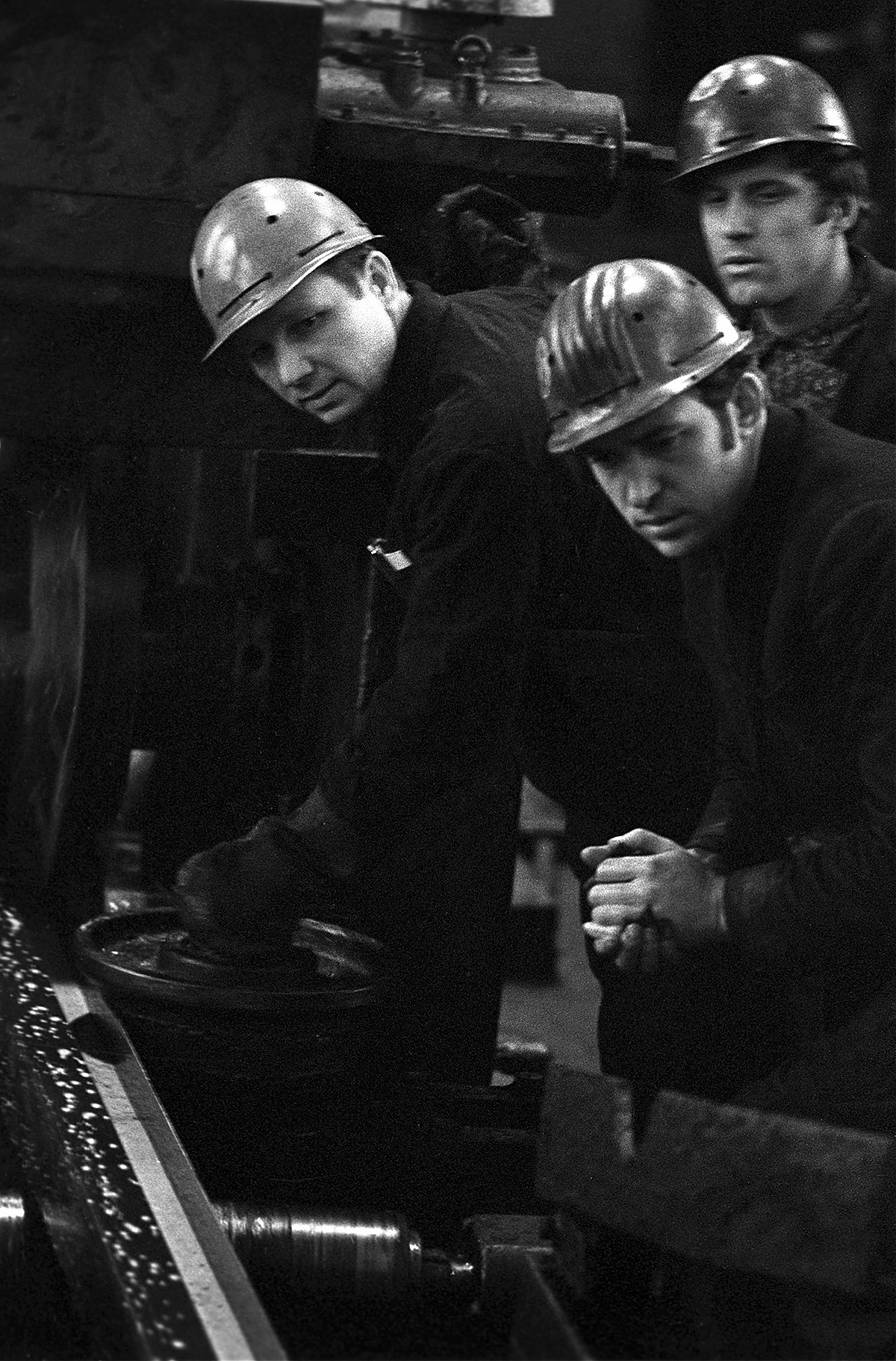
Zaporozhstal Metallurgical Plant, 1974
Max Alpert/Sputnik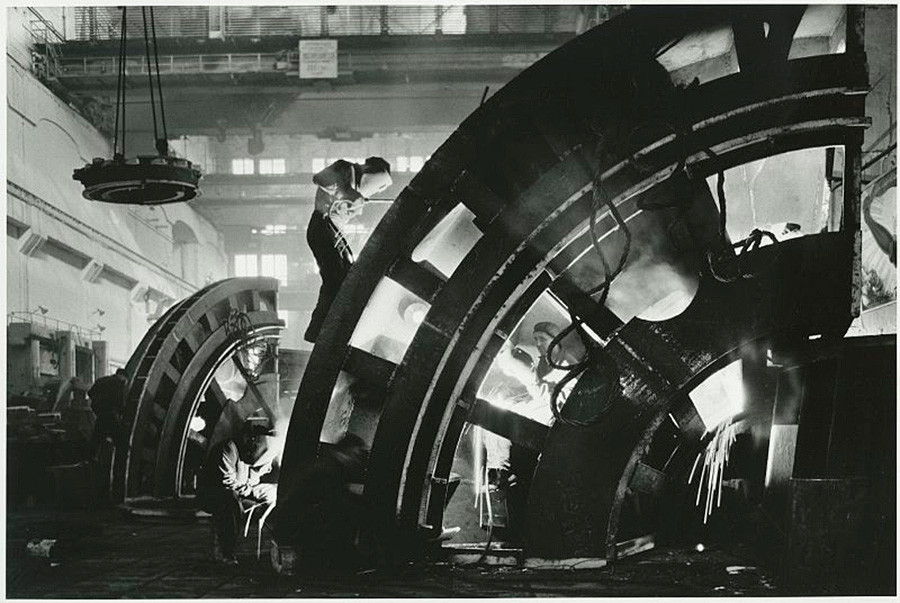
Welding of stators at Kharkov Turbogenerator Plant, 1958–59
Vsevolod Tarasevich/MAMM/MDF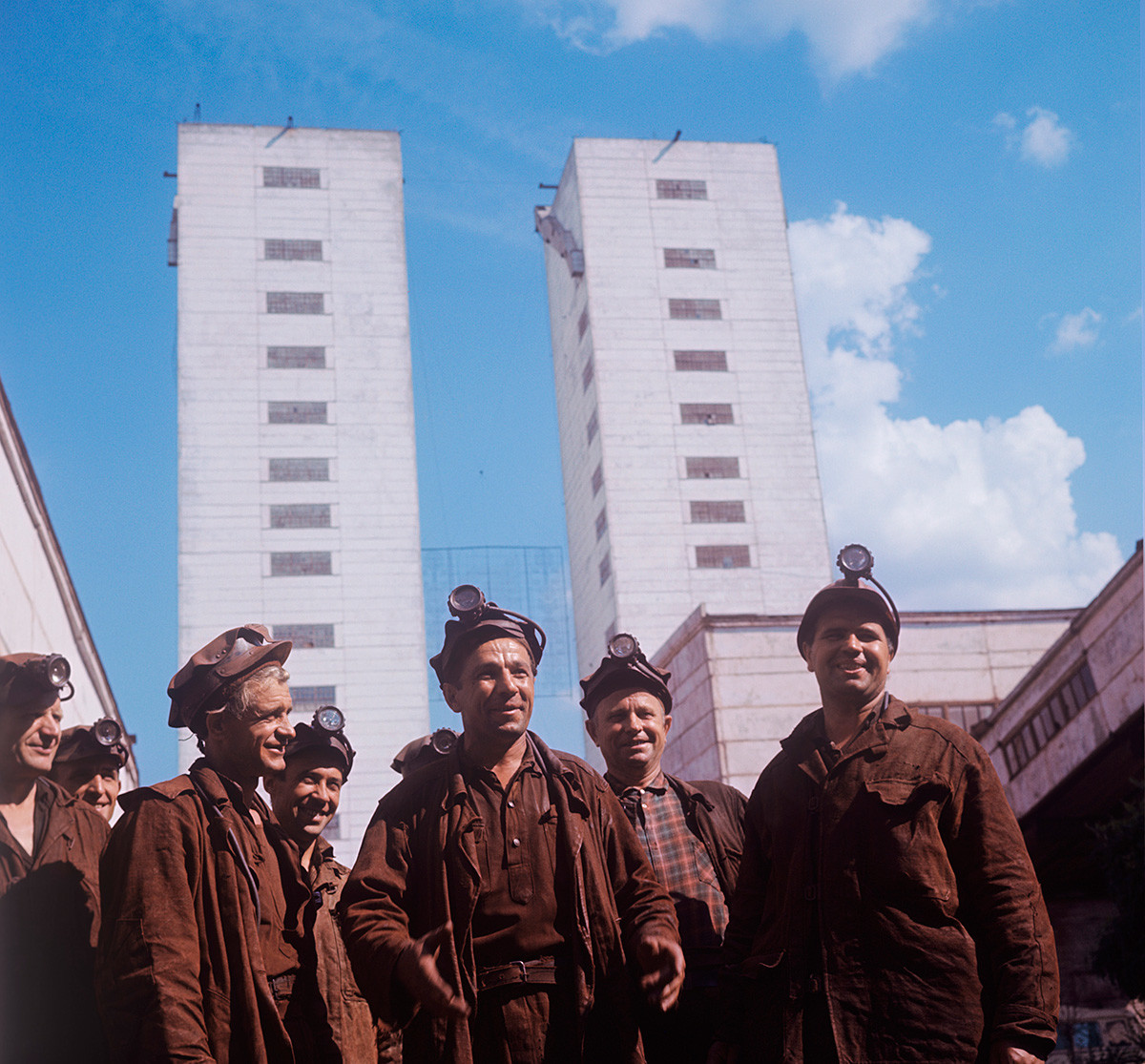
Miners at the Gvardeiskaya mine, Krivoy Rog, 1970
Vladimir Akimov/SputnikChernobyl
One of the most tragic events in the life of Soviet Ukraine was undoubtedly the Chernobyl disaster of 1986. A nuclear reactor exploded, throwing a huge amount of radiation into the air. The tragedy was compounded by the authorities’ failure to inform local residents and people in nearby regions, causing many to suffer and even die from the effects of radiation sickness.
Read more about the Chernobyl accident here.
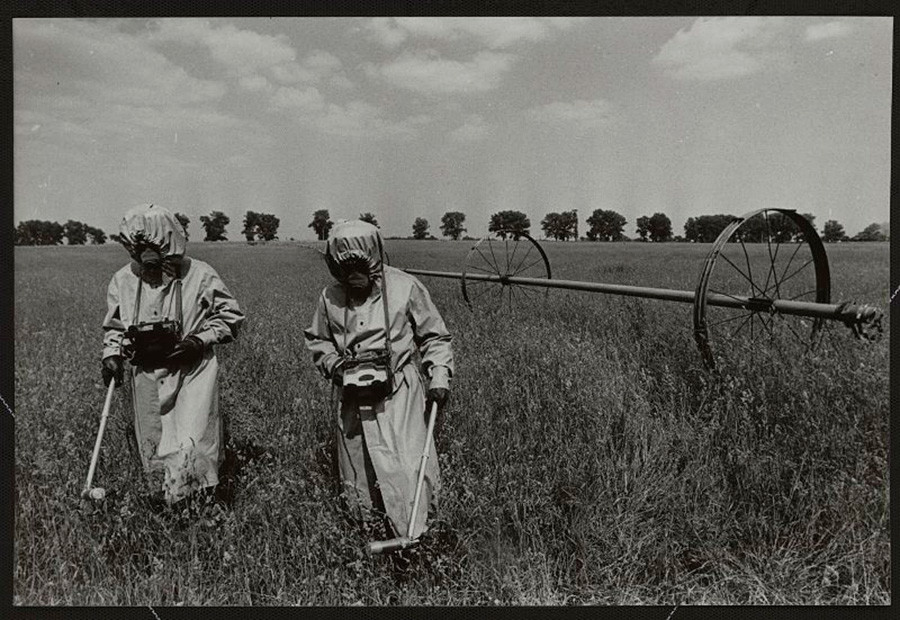
Measuring the radiation level after the explosion of the Chernobyl Nuclear Power Plant, 1986
MAMM/MDF
Measuring radiation from a helicopter, 1986
Vladimir Vyatkin/MAMM/MDFLife, pure and simple
These photos depict life as it was in Soviet Ukraine, including May Day celebrations, Soviet interior design and fashion, and brightly embroidered national costumes.
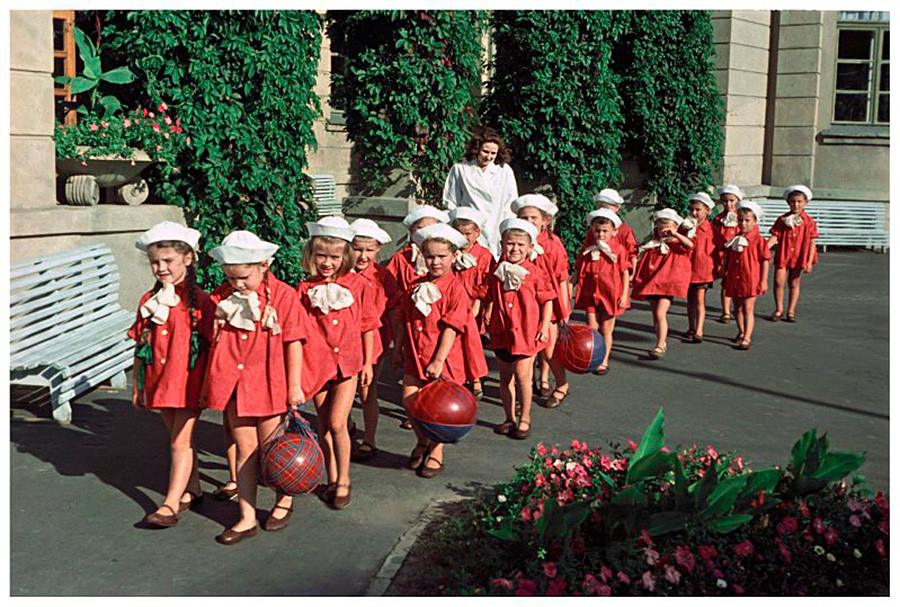
Kindergarten No. 1 of the Arsenal plant in Pechersk District, Kiev, 1953
Nikita Kozlovsky/MAMM/MDF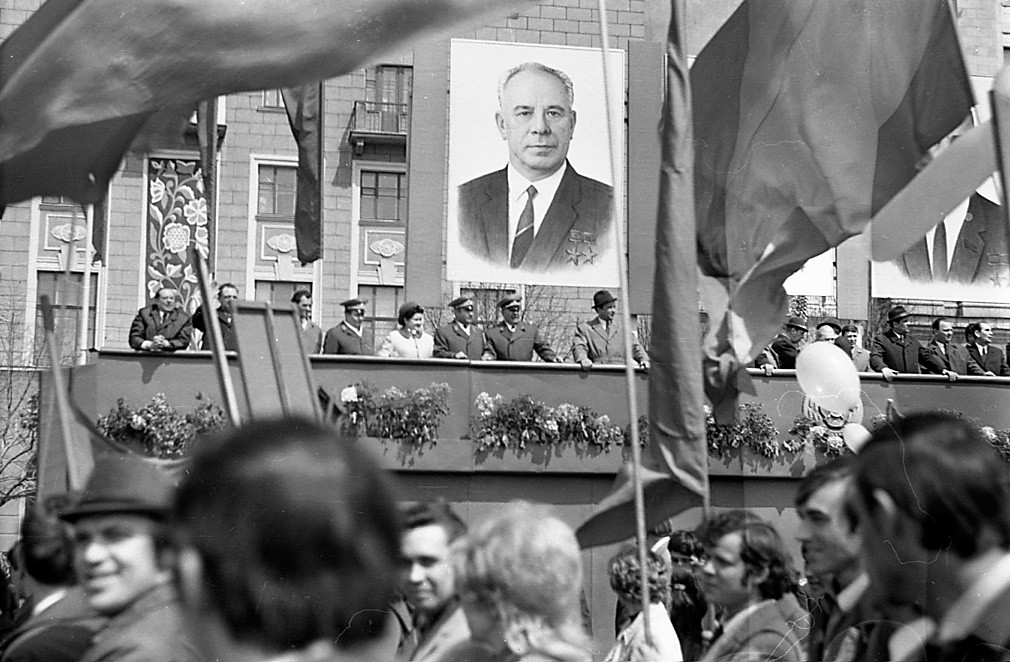
May Day celebration in Kharkov, 1974
Vasily Gorodov/Photos of russiainphoto.ru users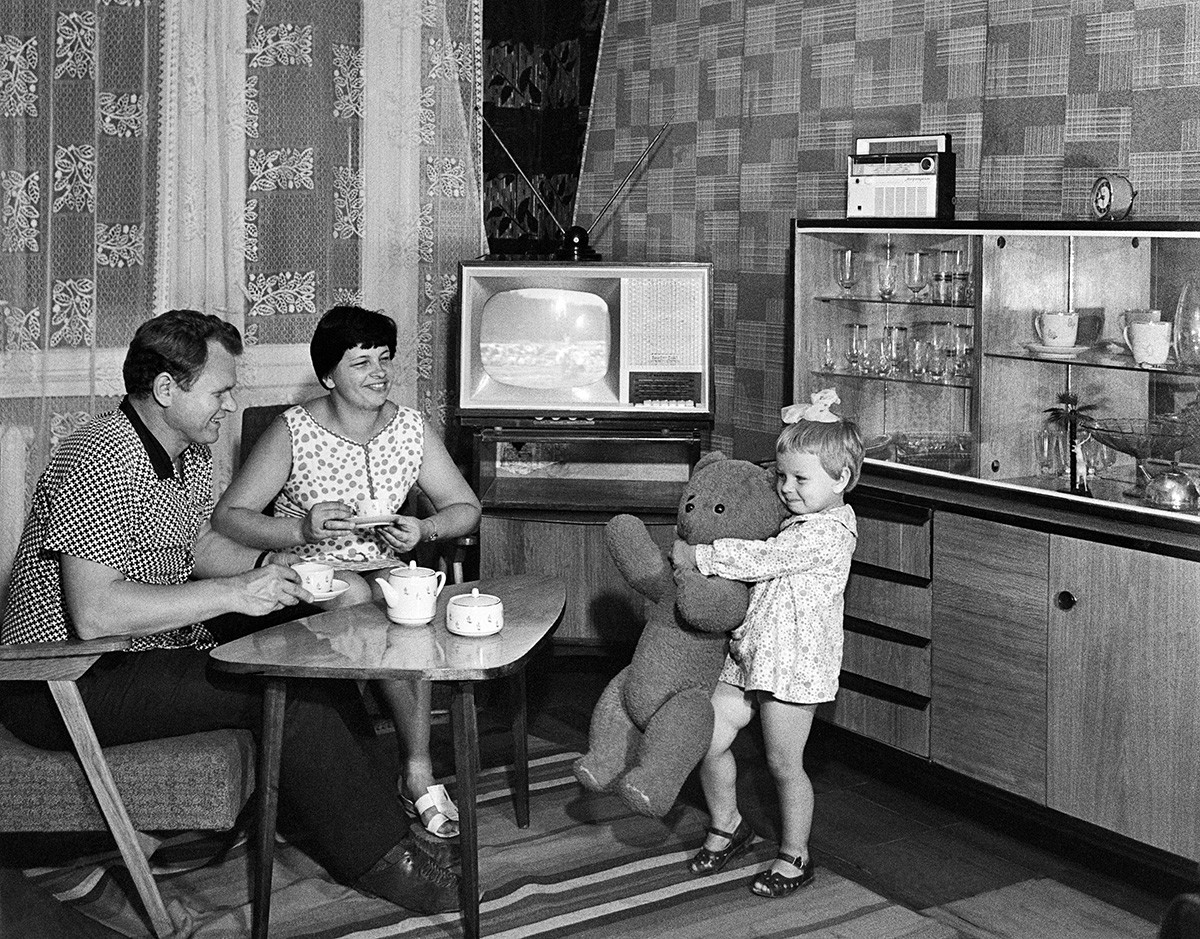
Senior foreman with family, Odessa, 1971
Svet/Sputnik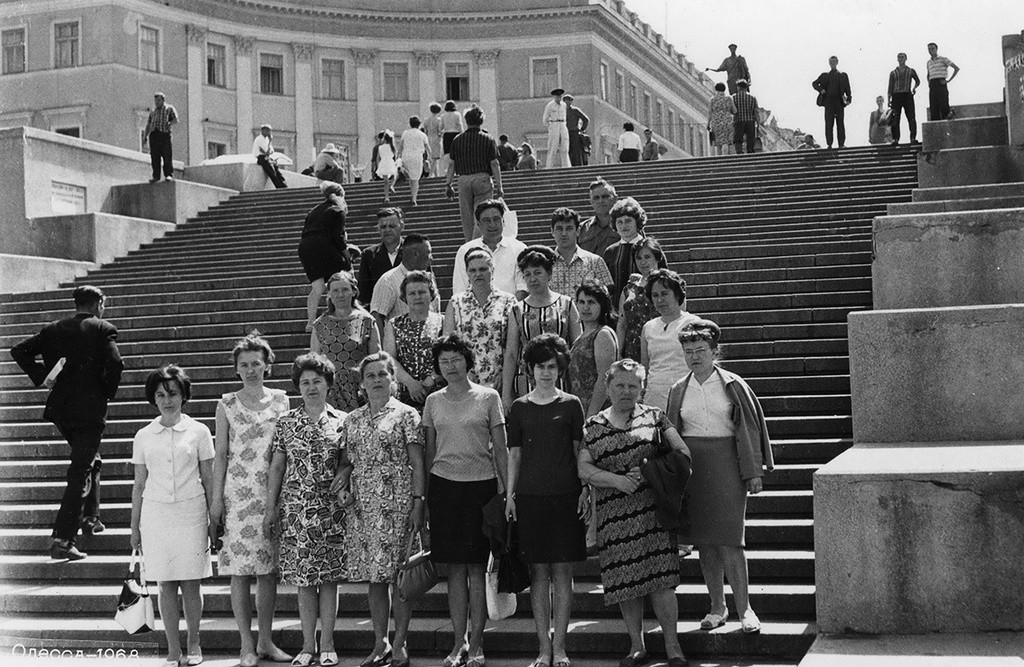
Sightseers on the Potemkin Stairs, Odessa, 1968
Sharypov-Afanasyev archive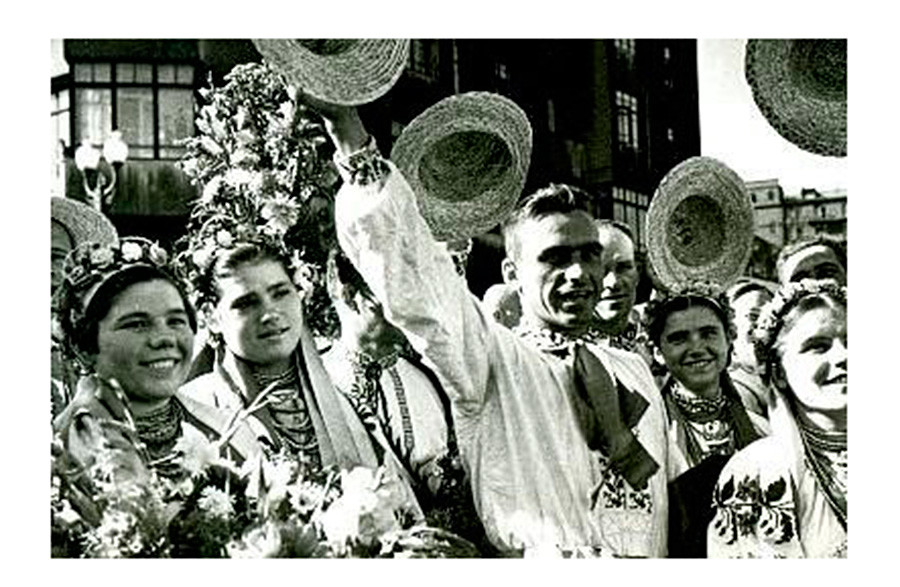
Young people in Western Ukraine, 1940
Ivan Shagin/MAMM/MDF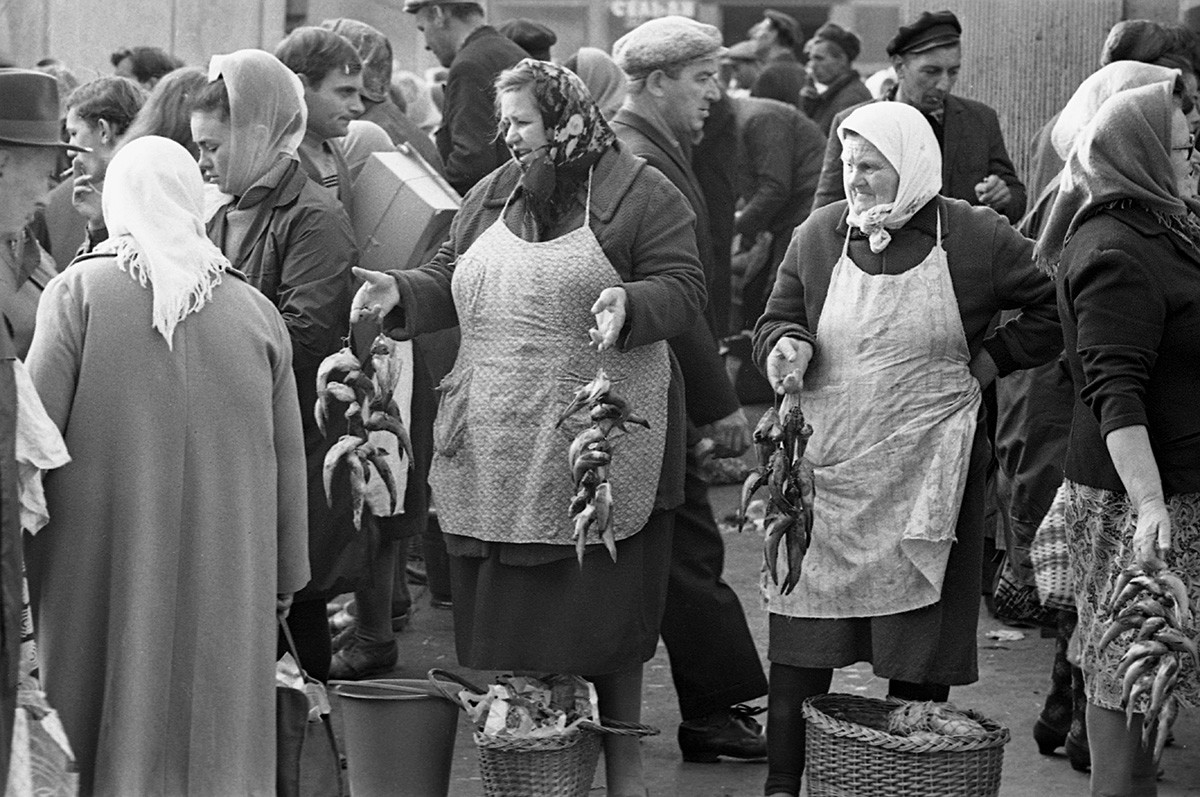
Fish trading at an Odessa market, 1970
Alexander Makarov/Sputnik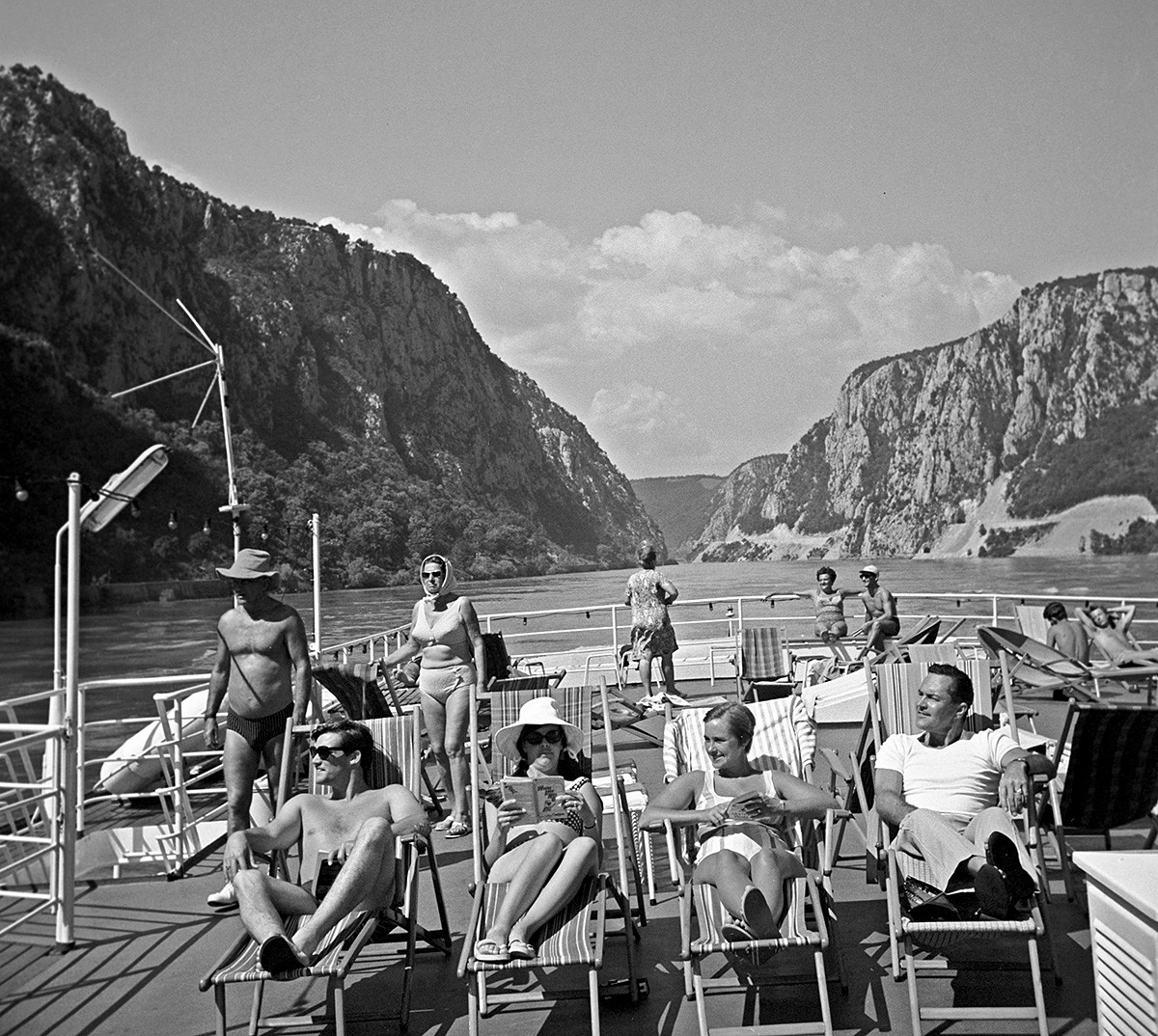
Tourists on the deck of a ship on the Danube, 1969
Yakov Berliner/Sputnik
On a street in Odessa, 1970
Alexander Makarov/SputnikIf using any of Russia Beyond's content, partly or in full, always provide an active hyperlink to the original material.
Subscribe
to our newsletter!
Get the week's best stories straight to your inbox